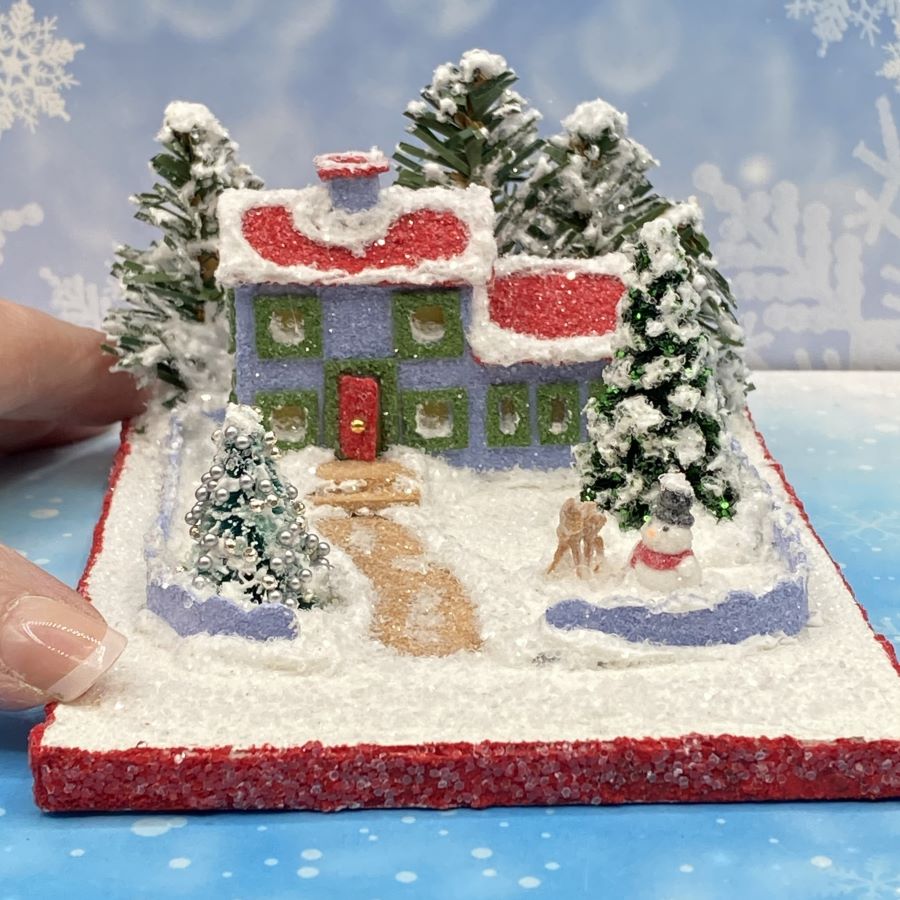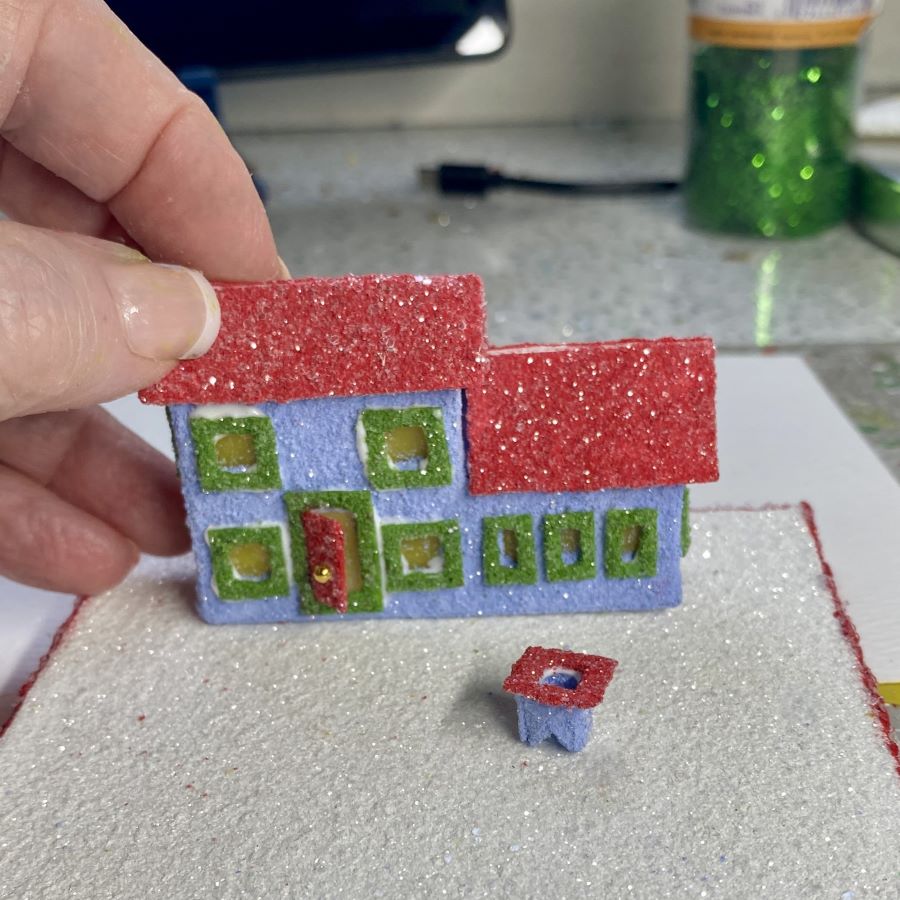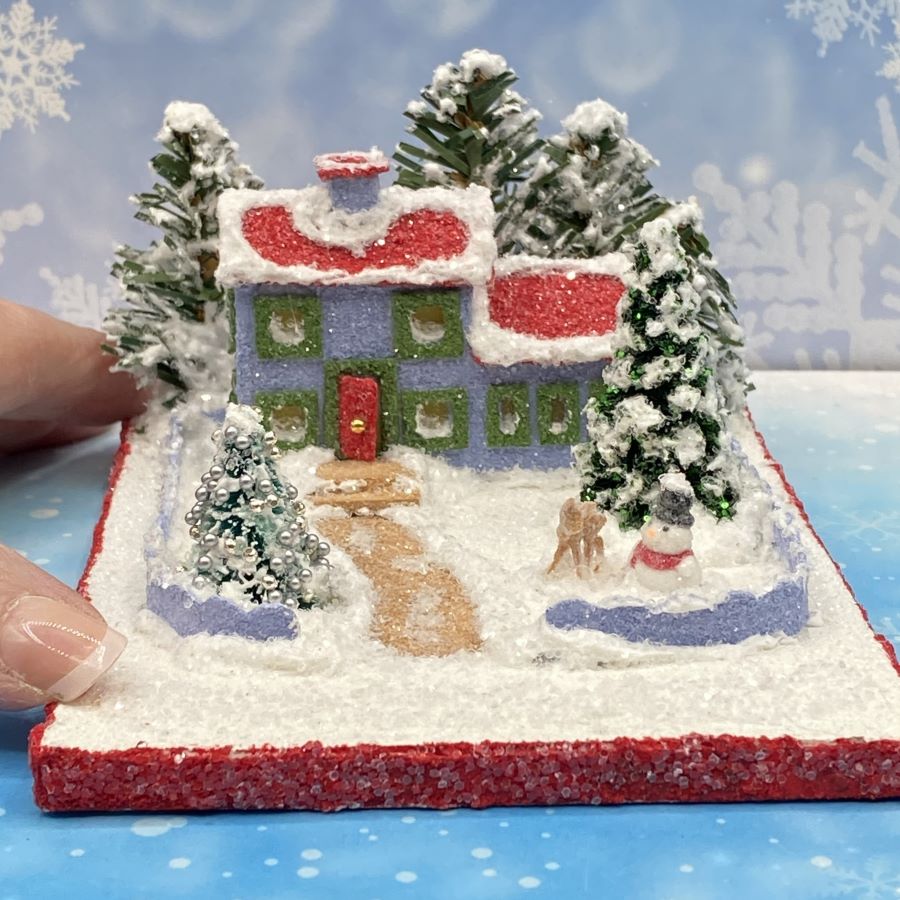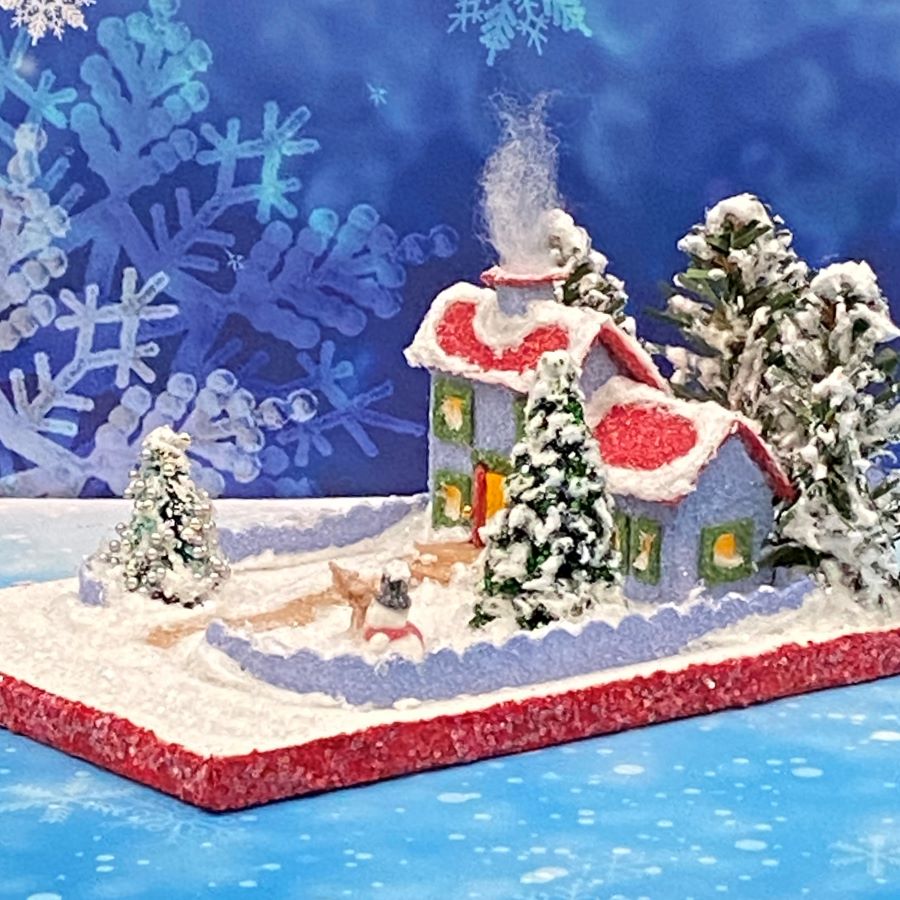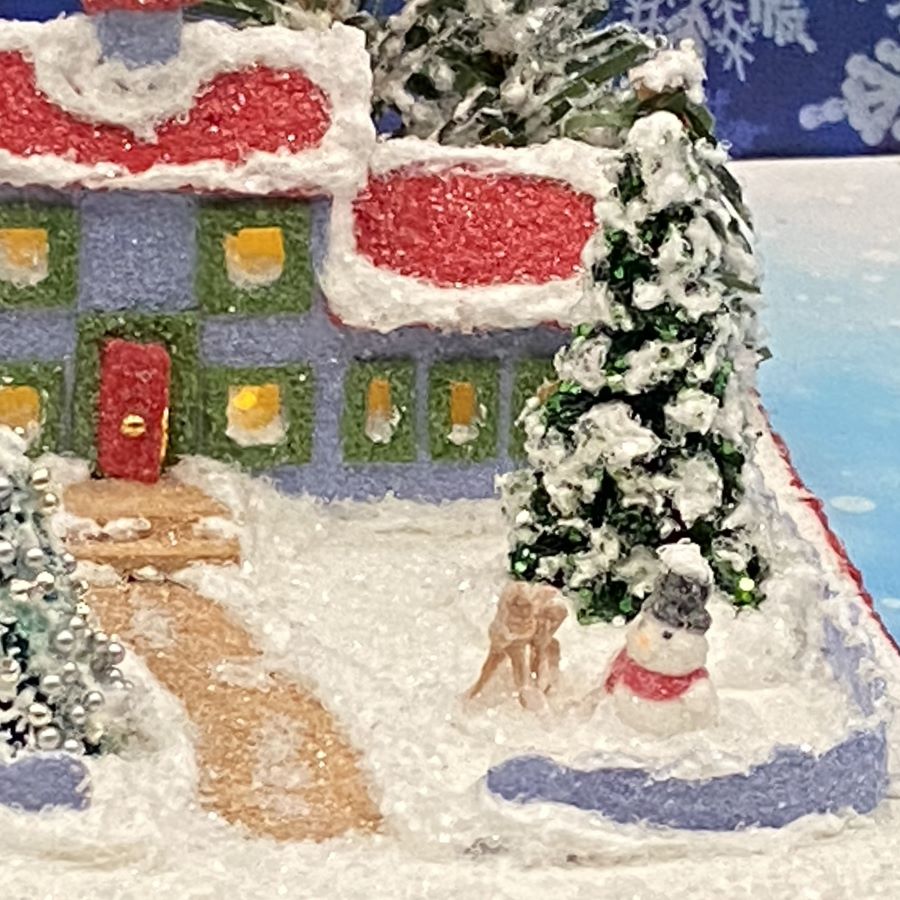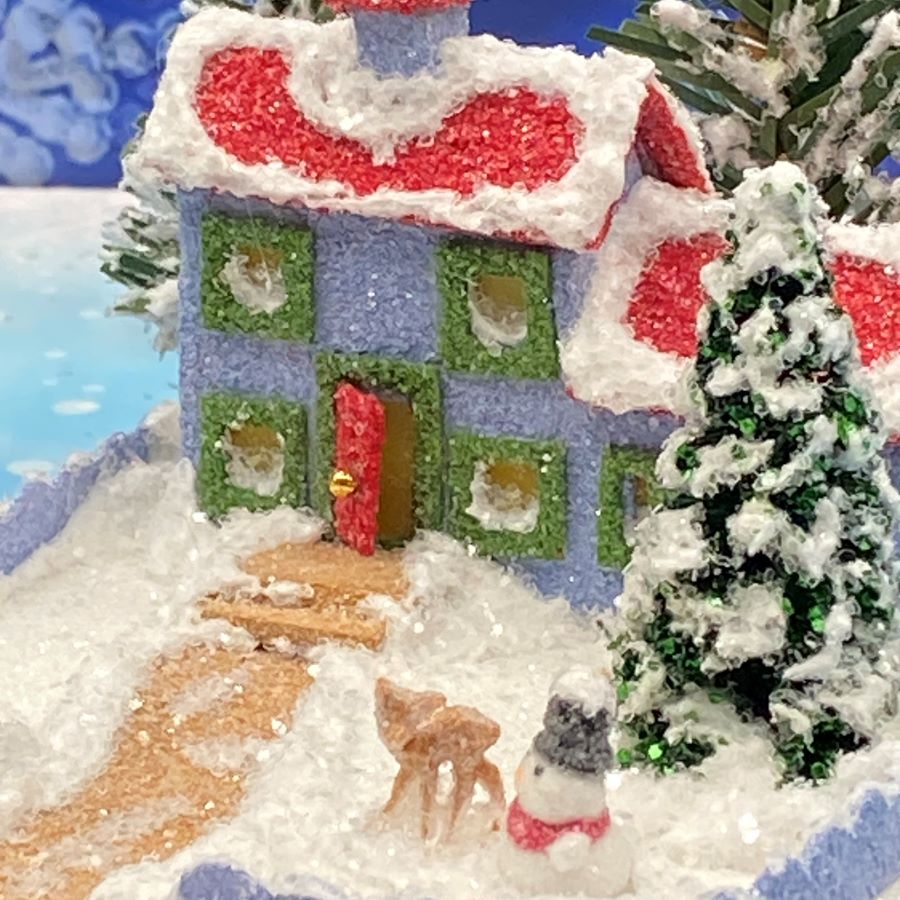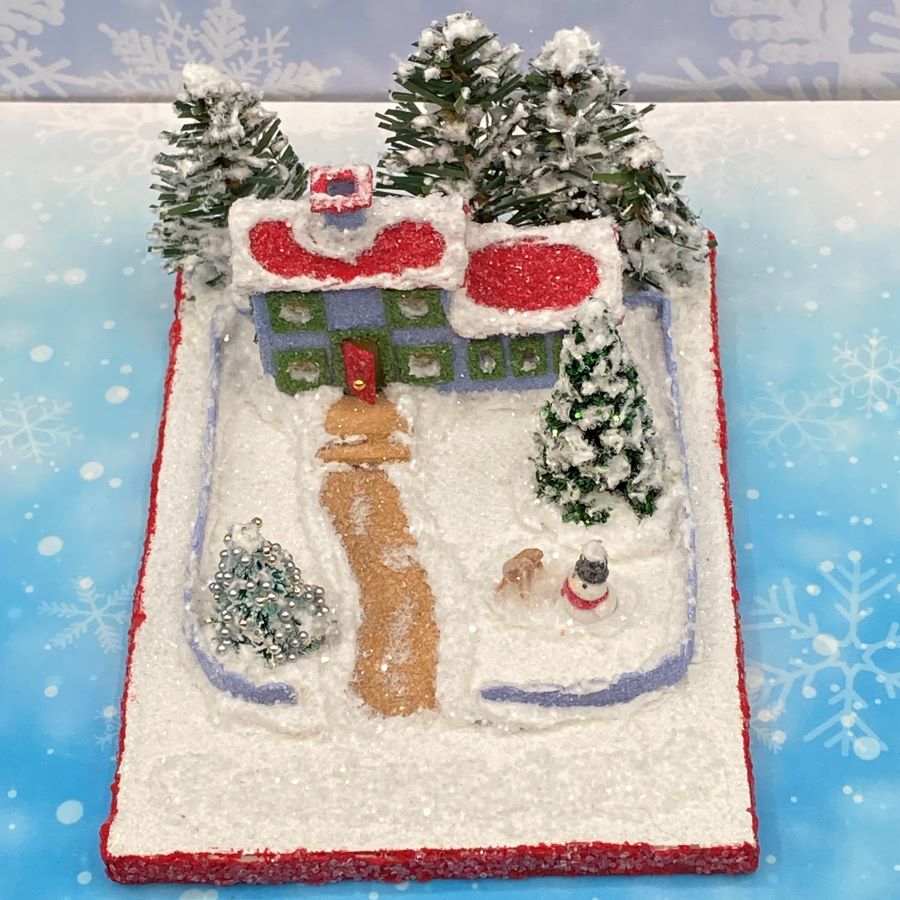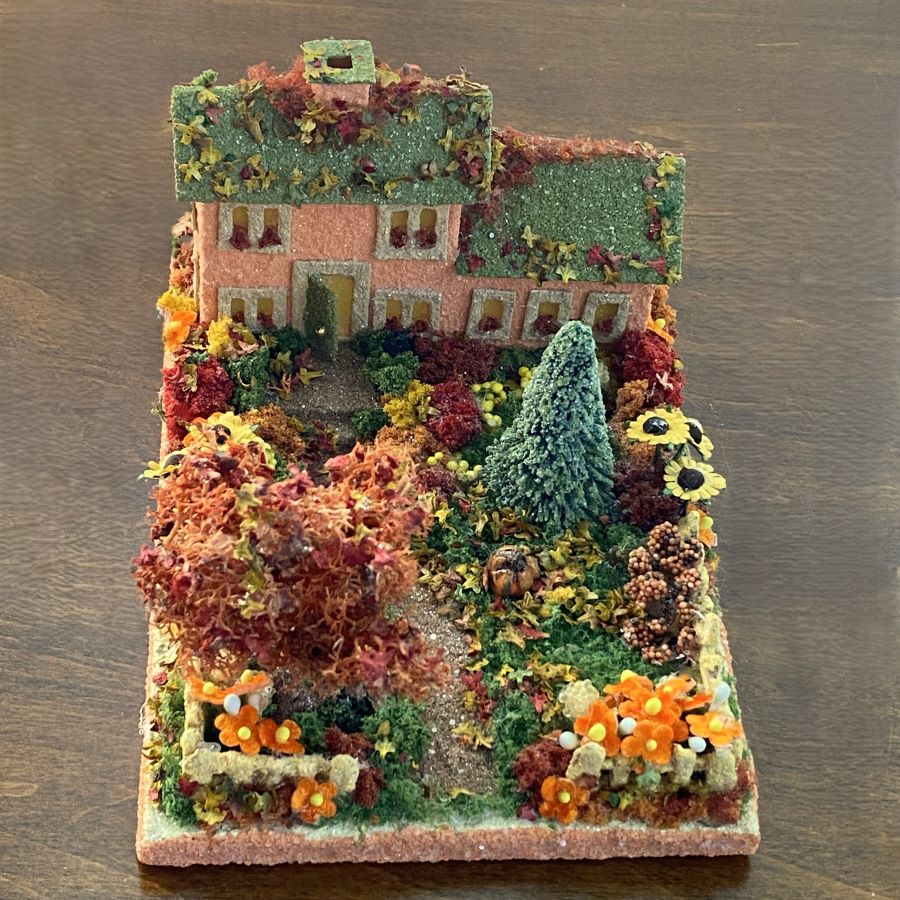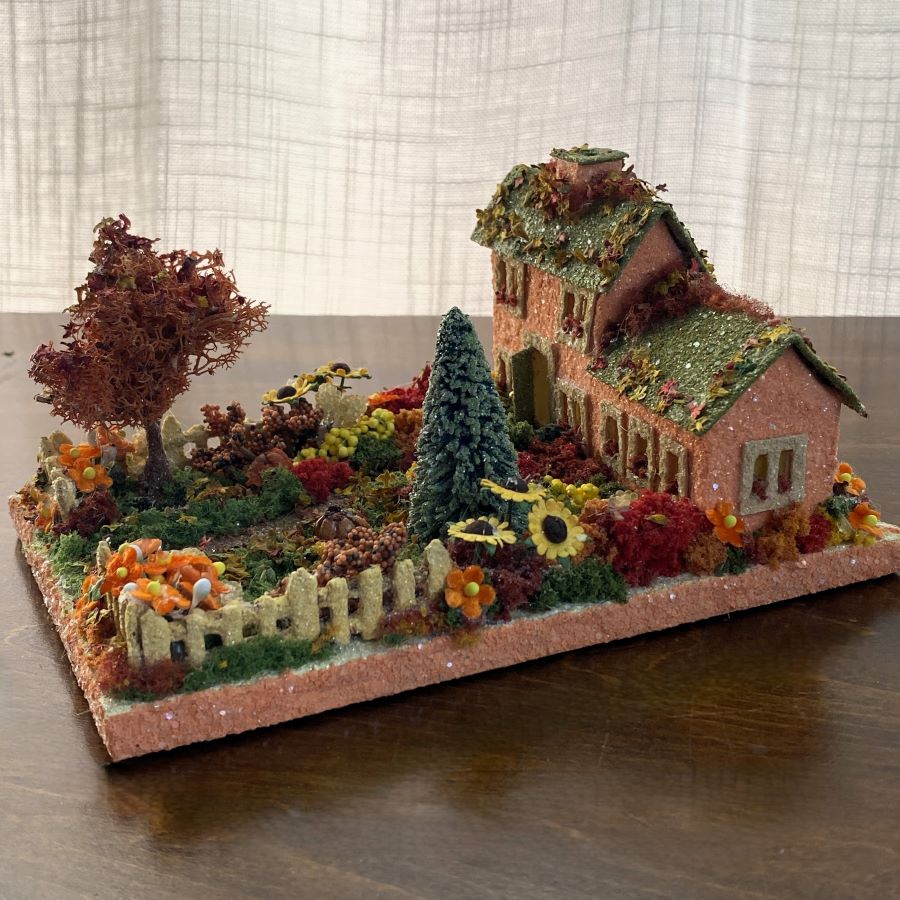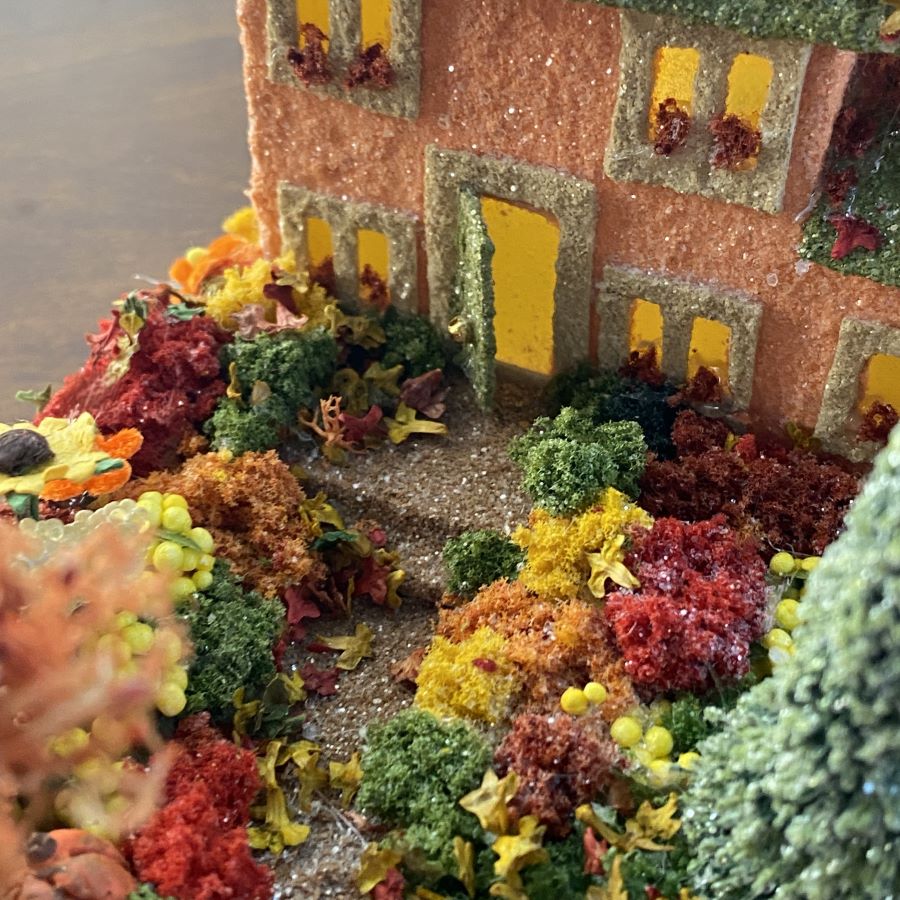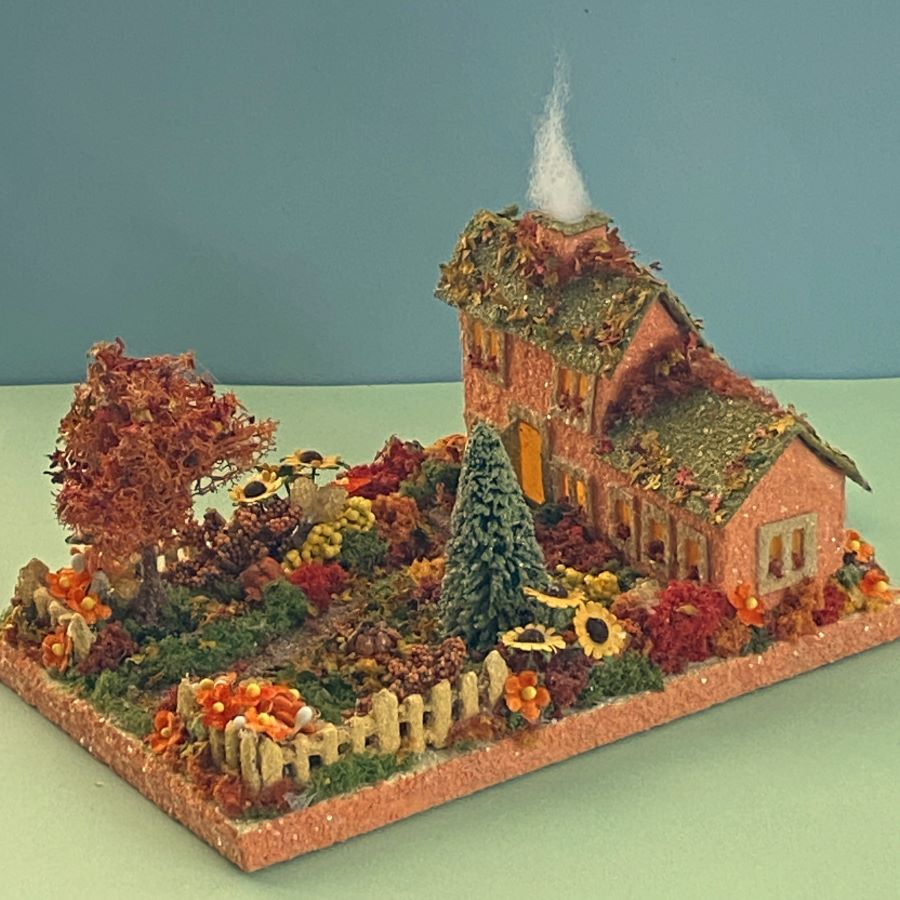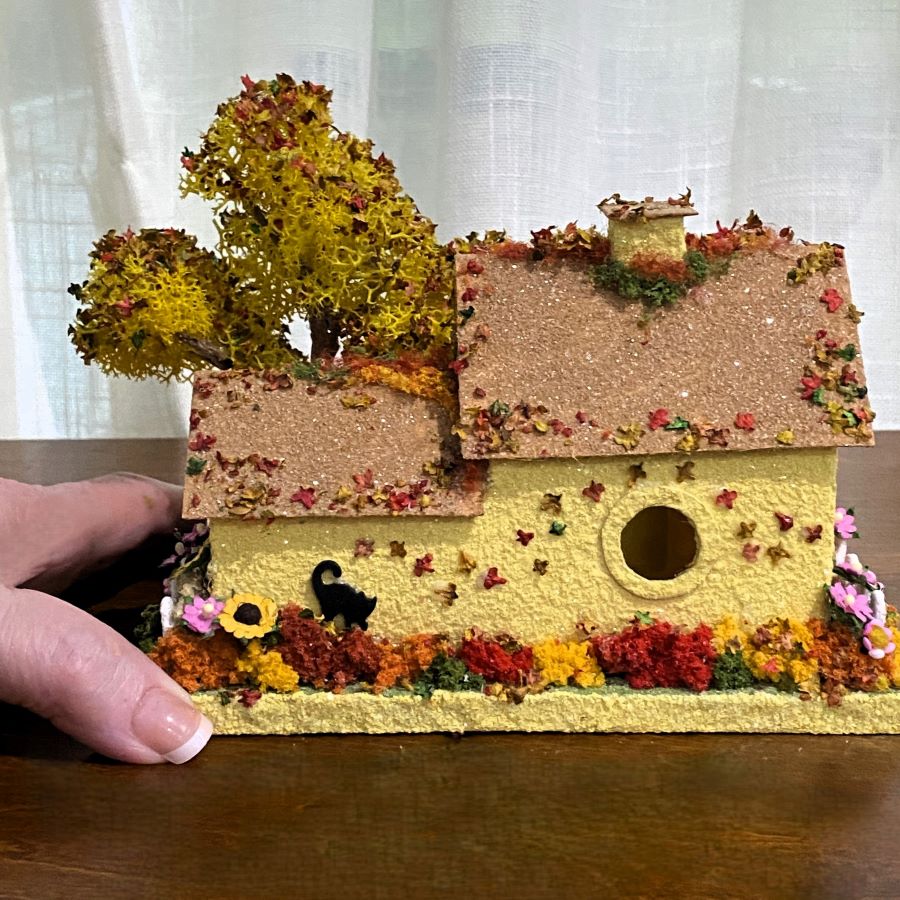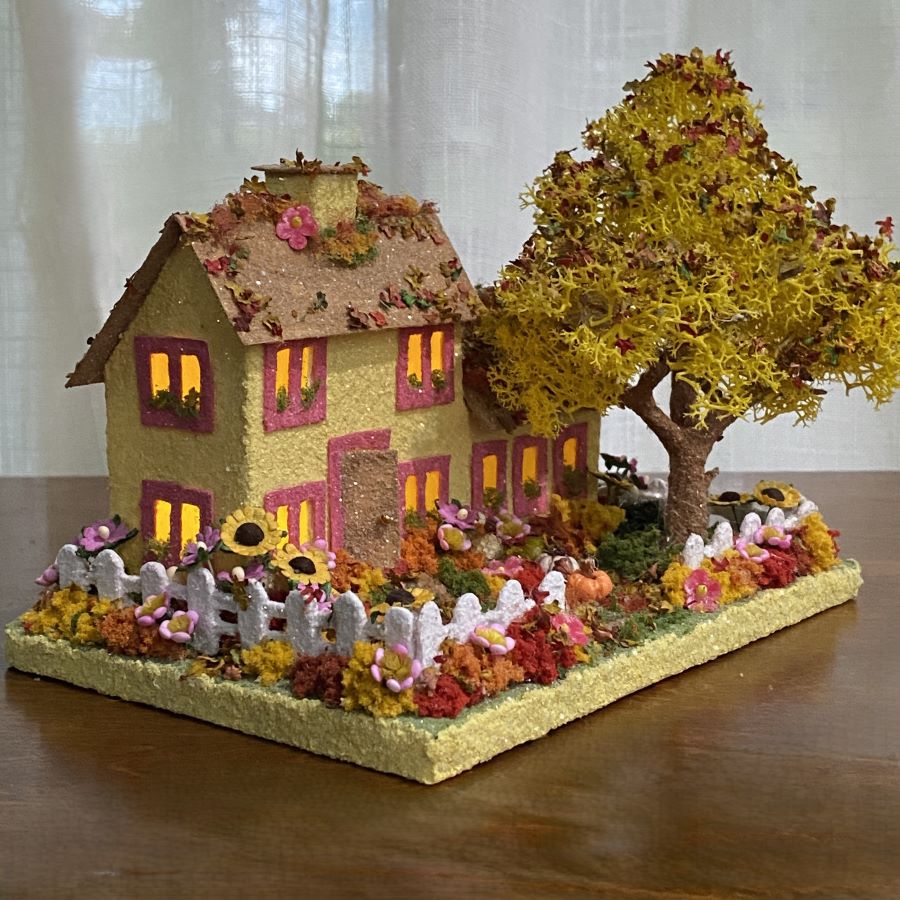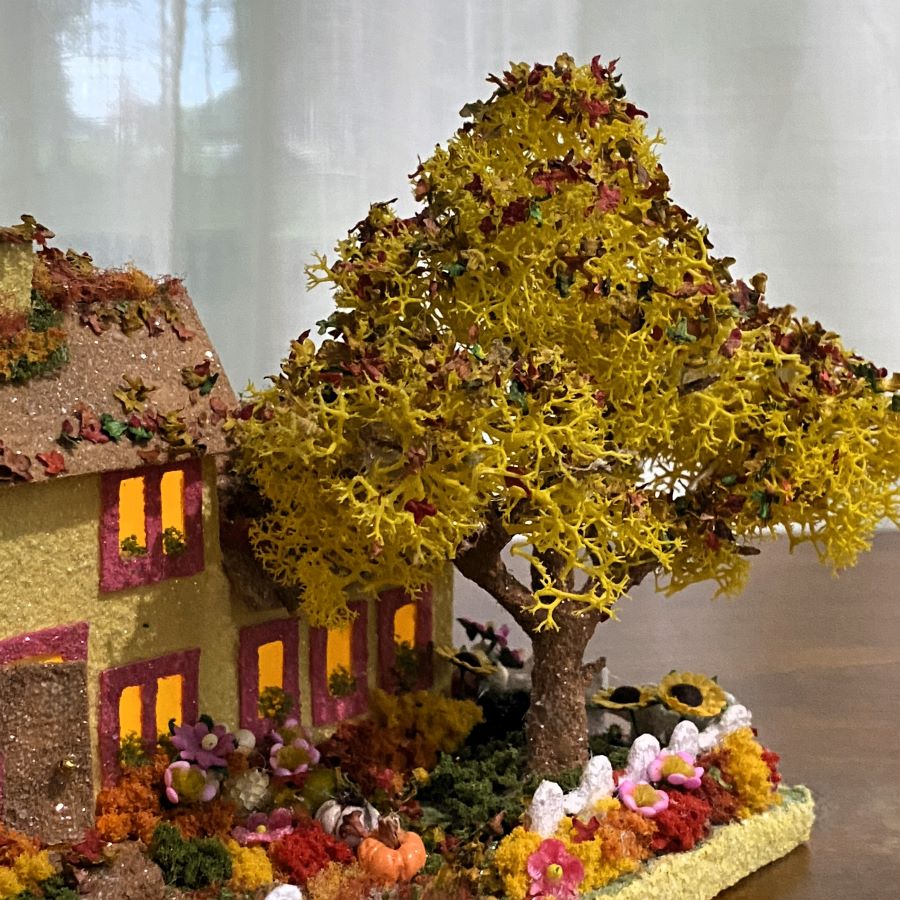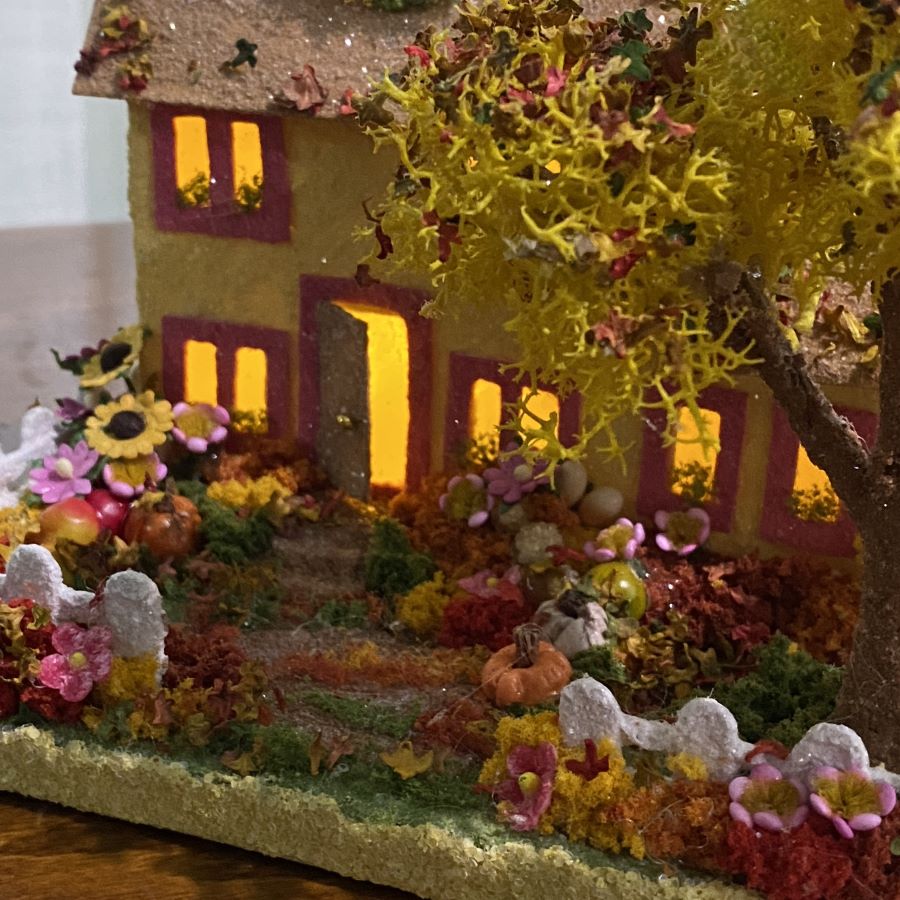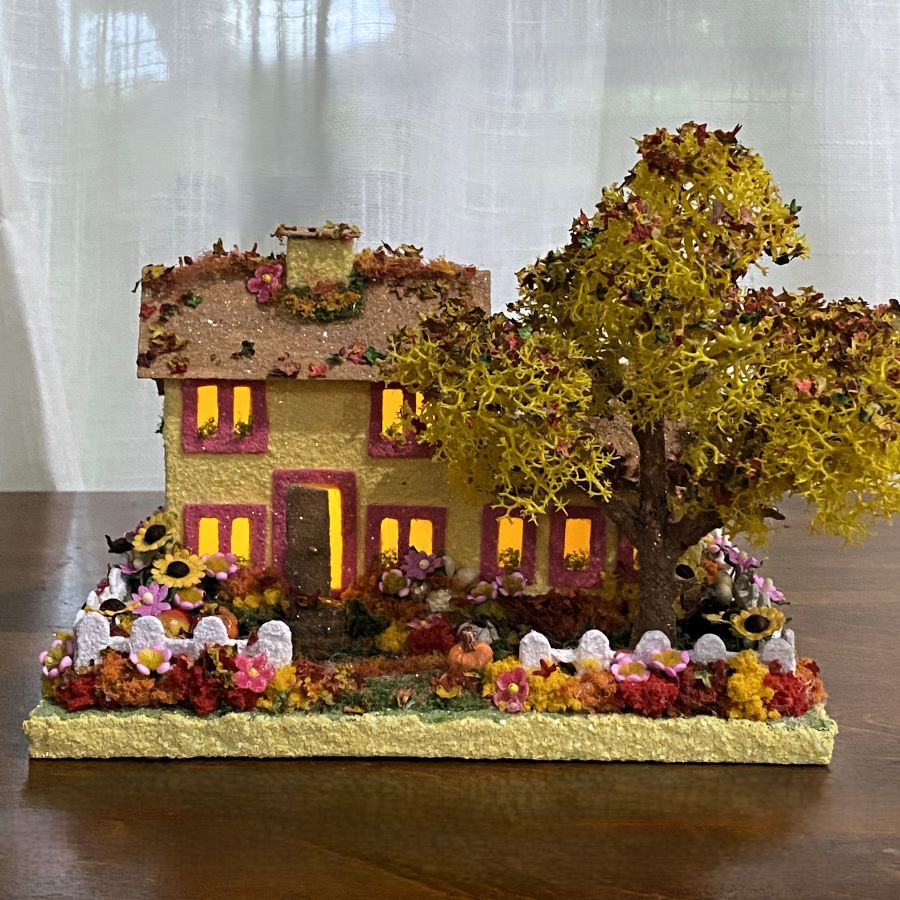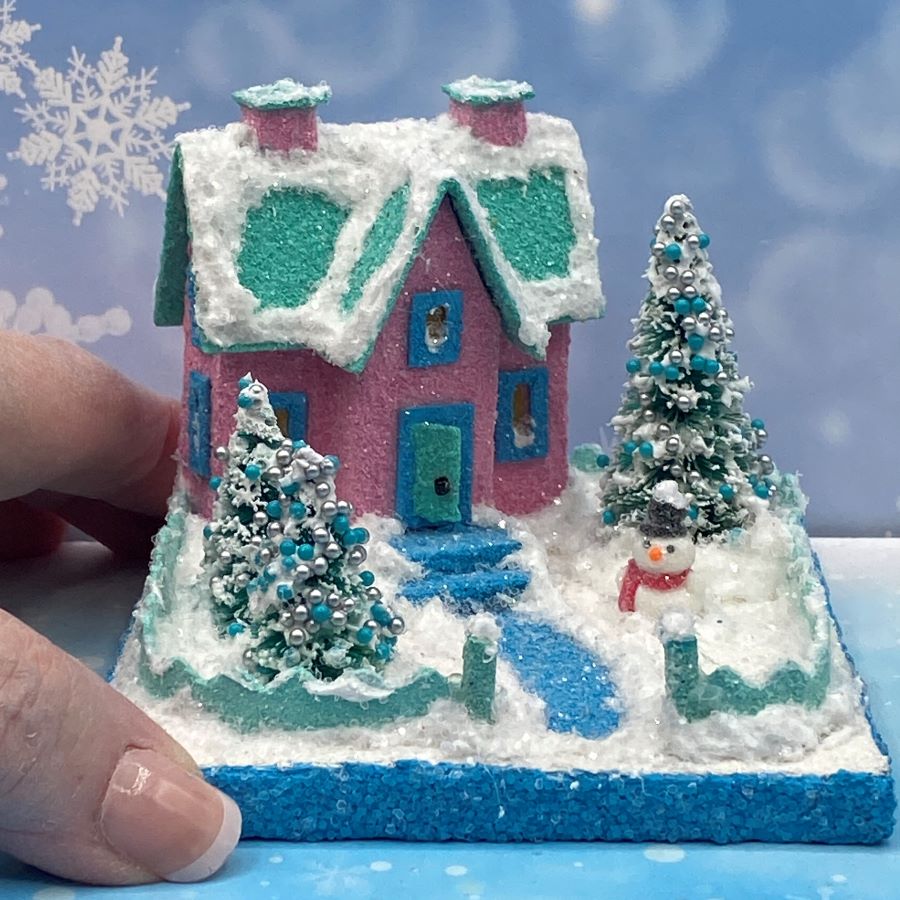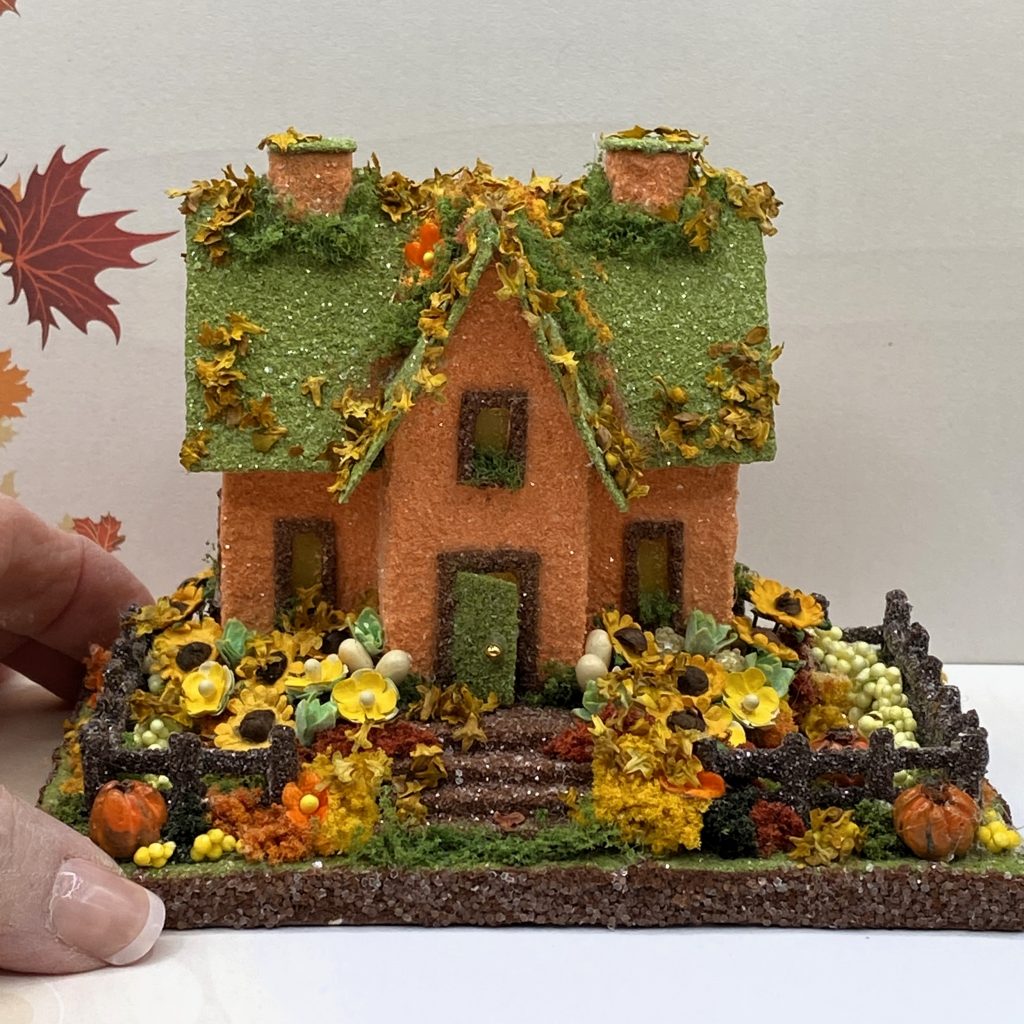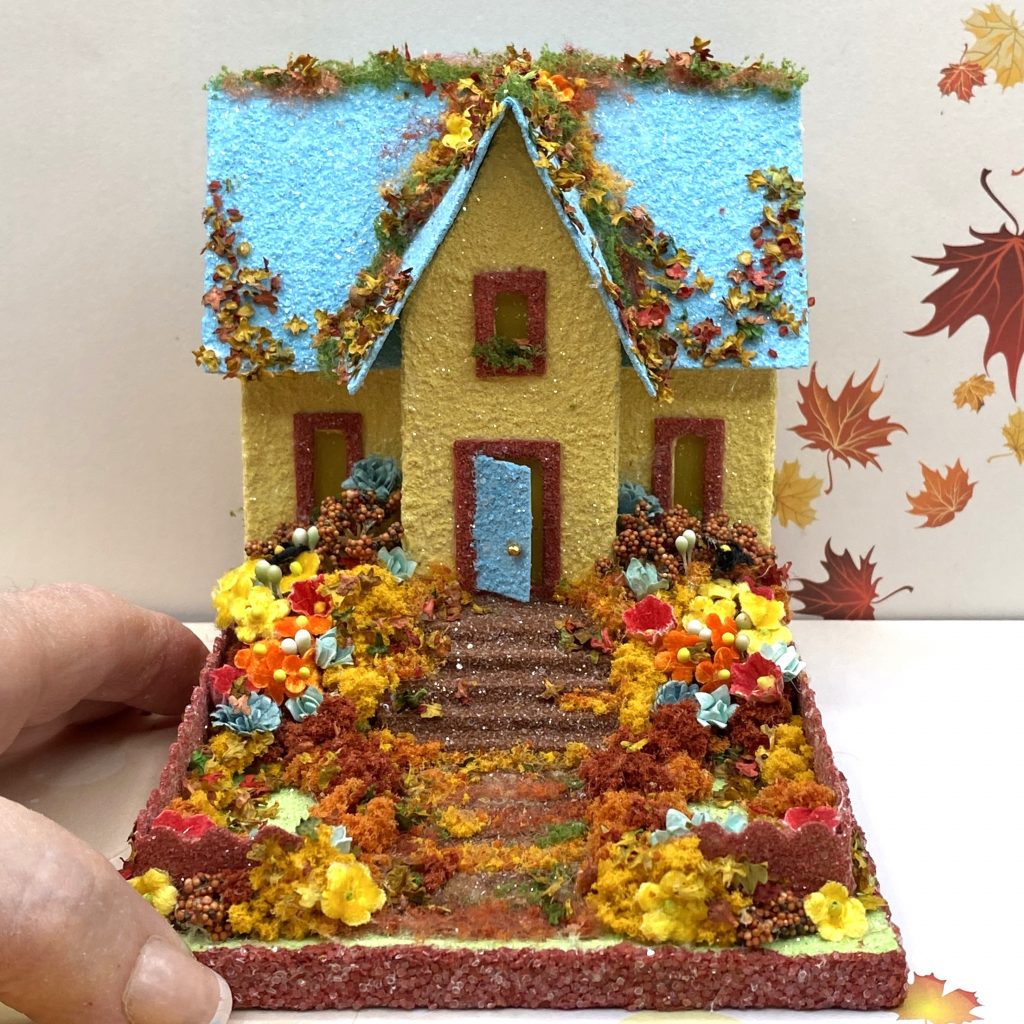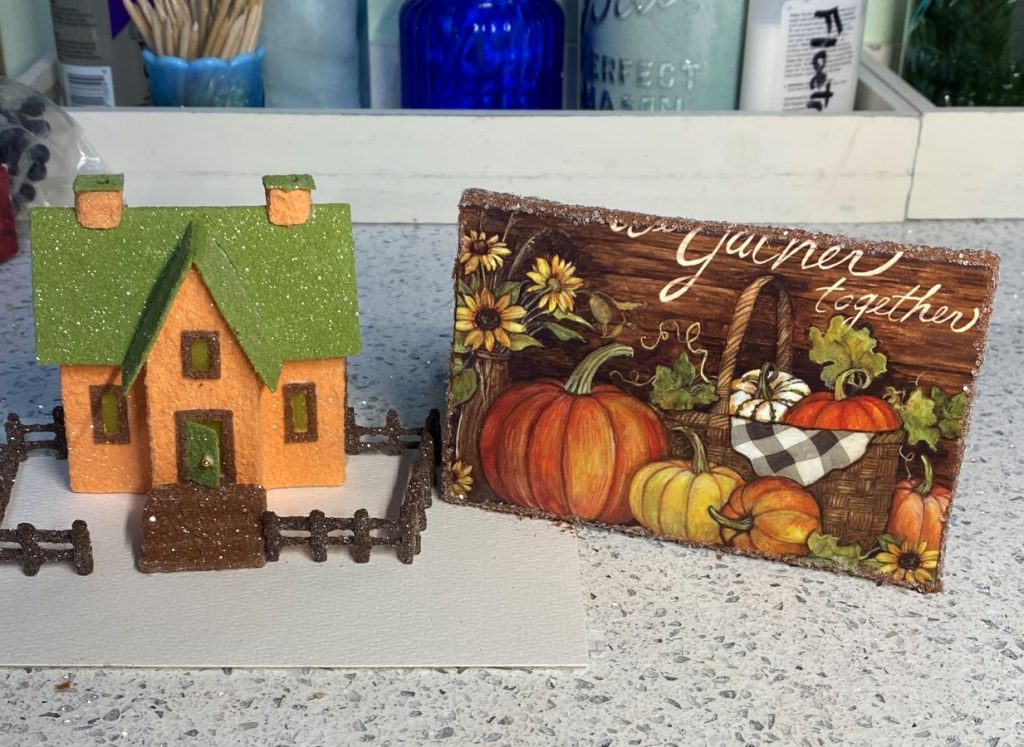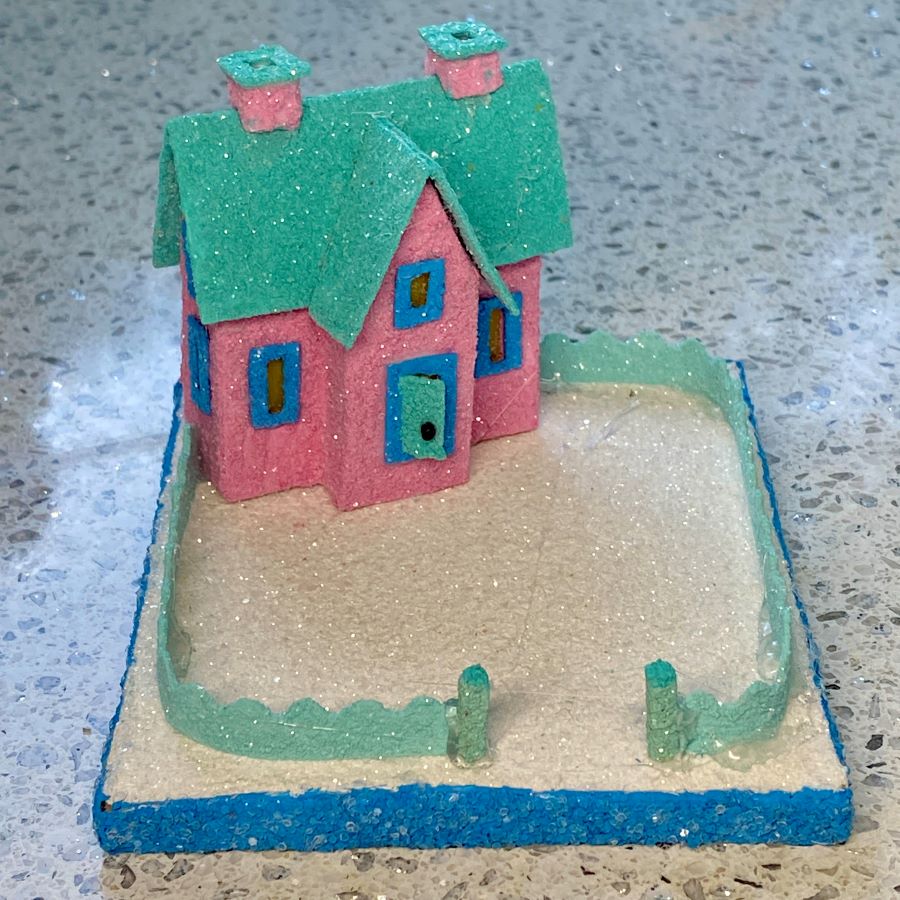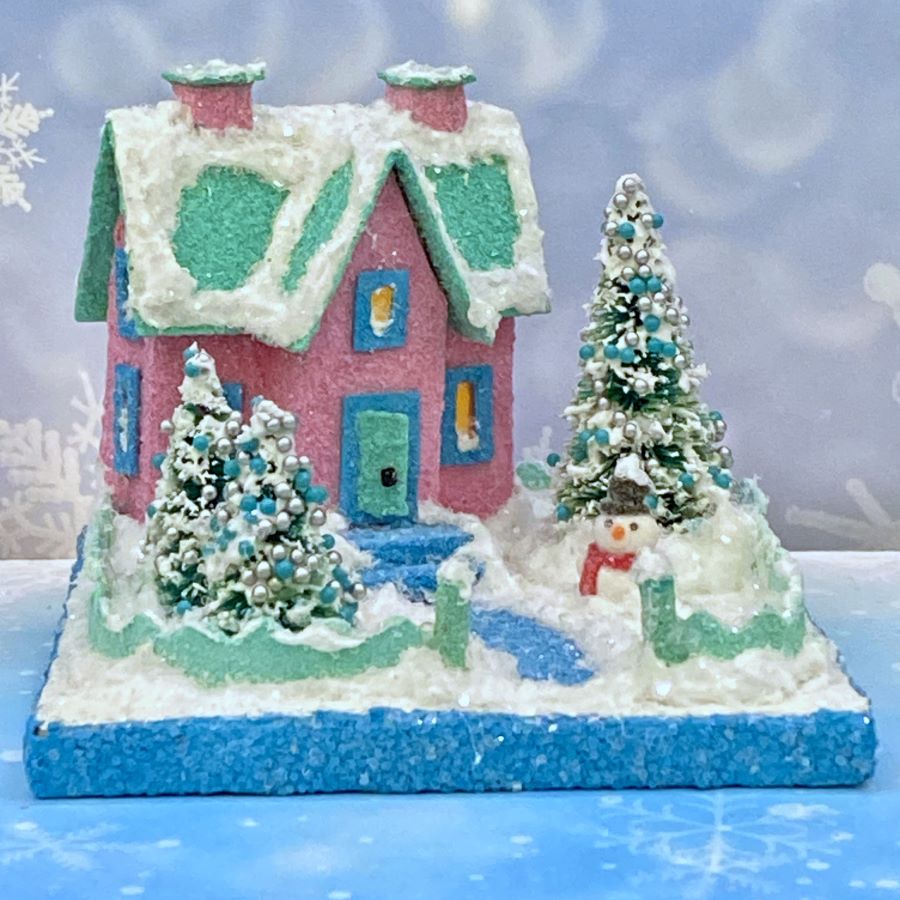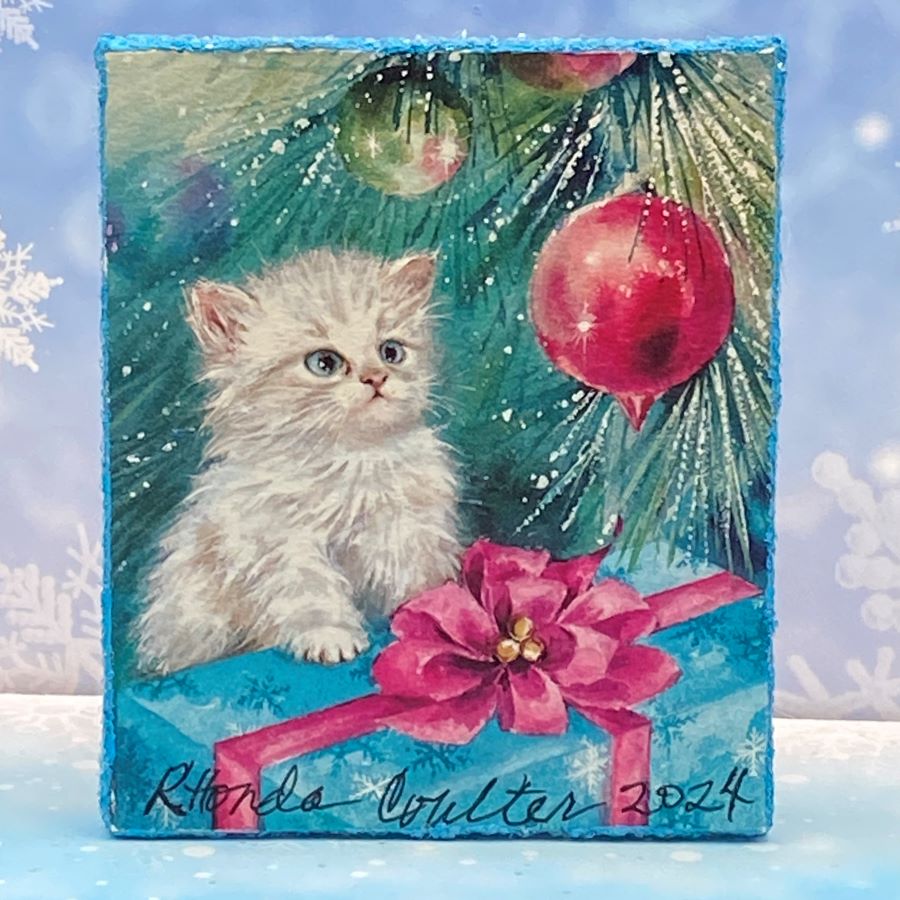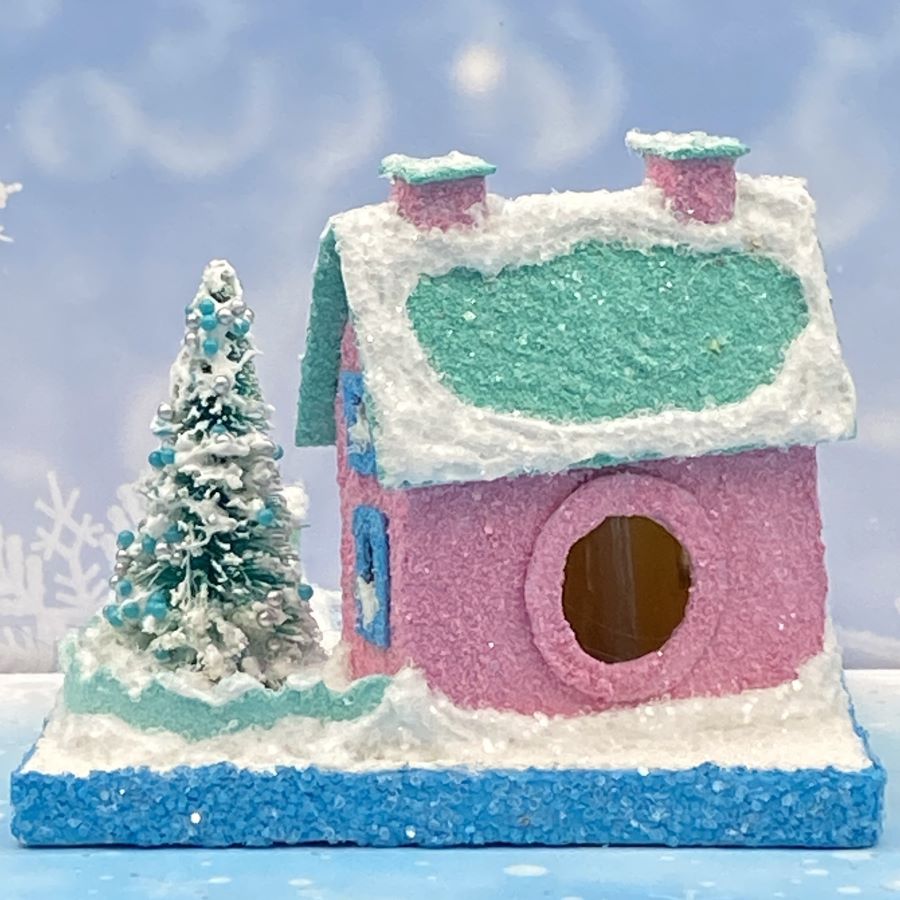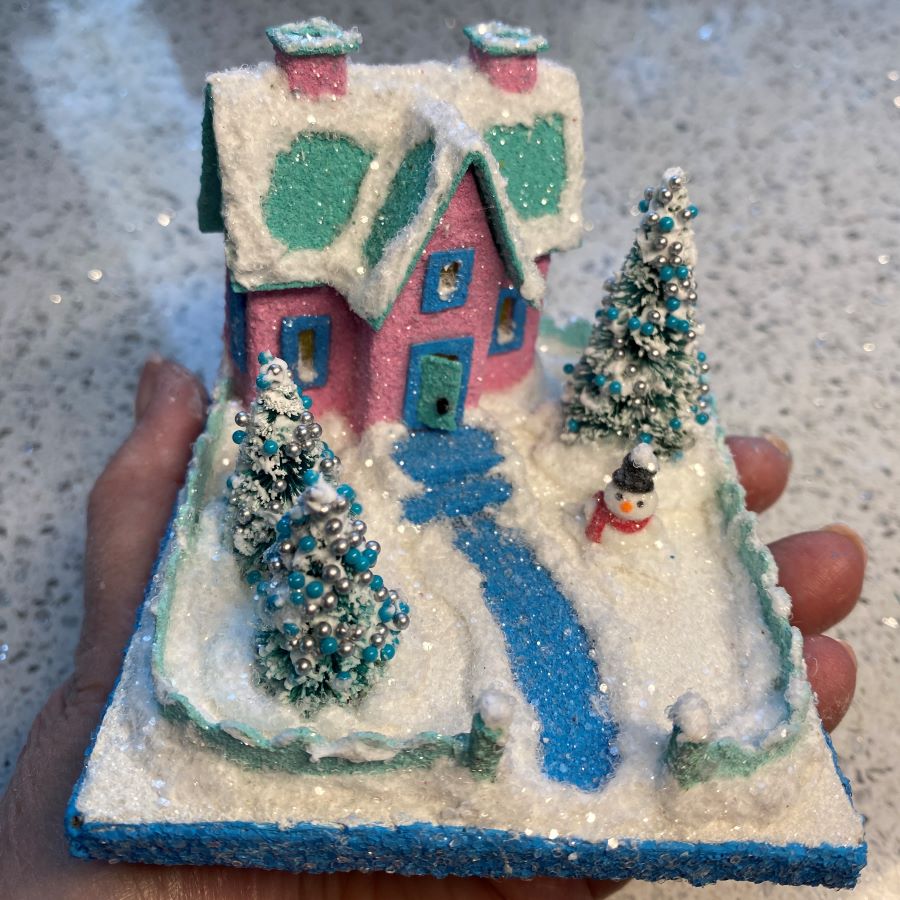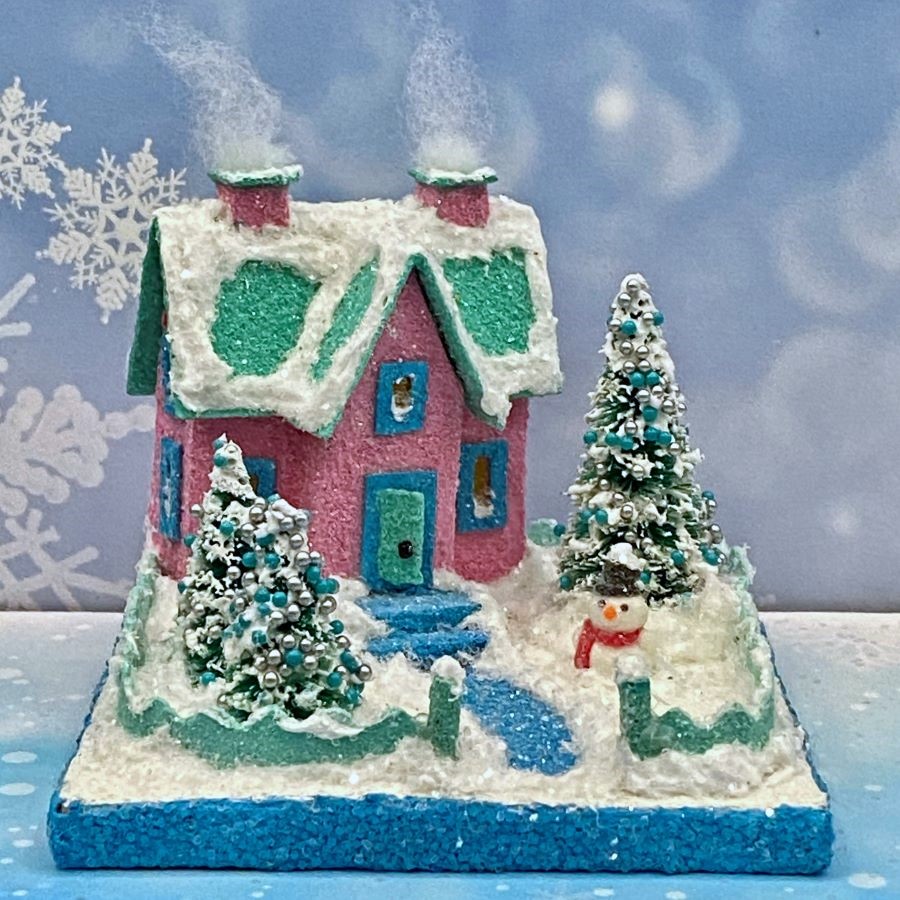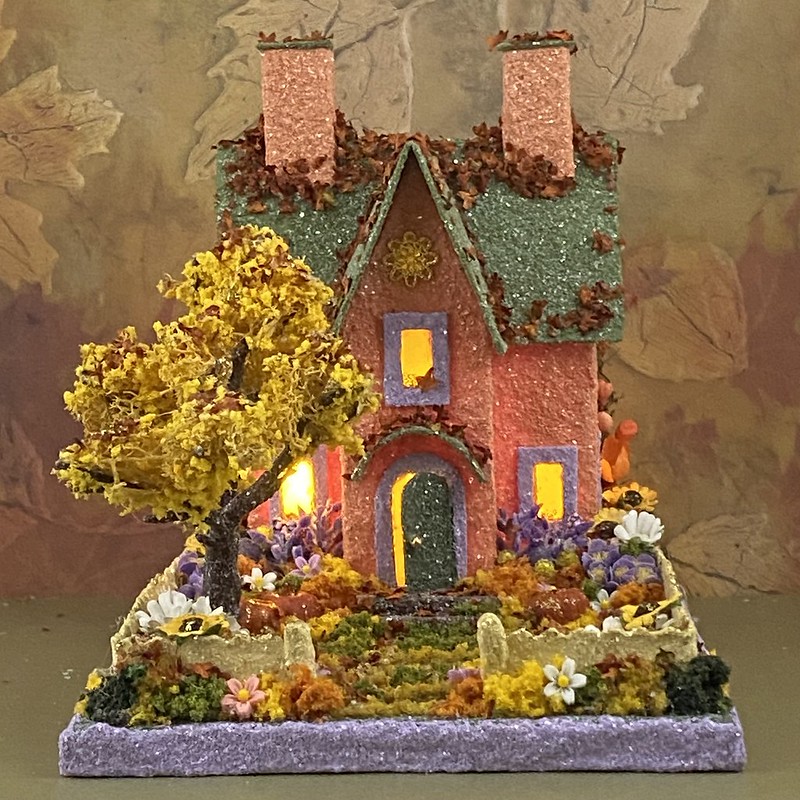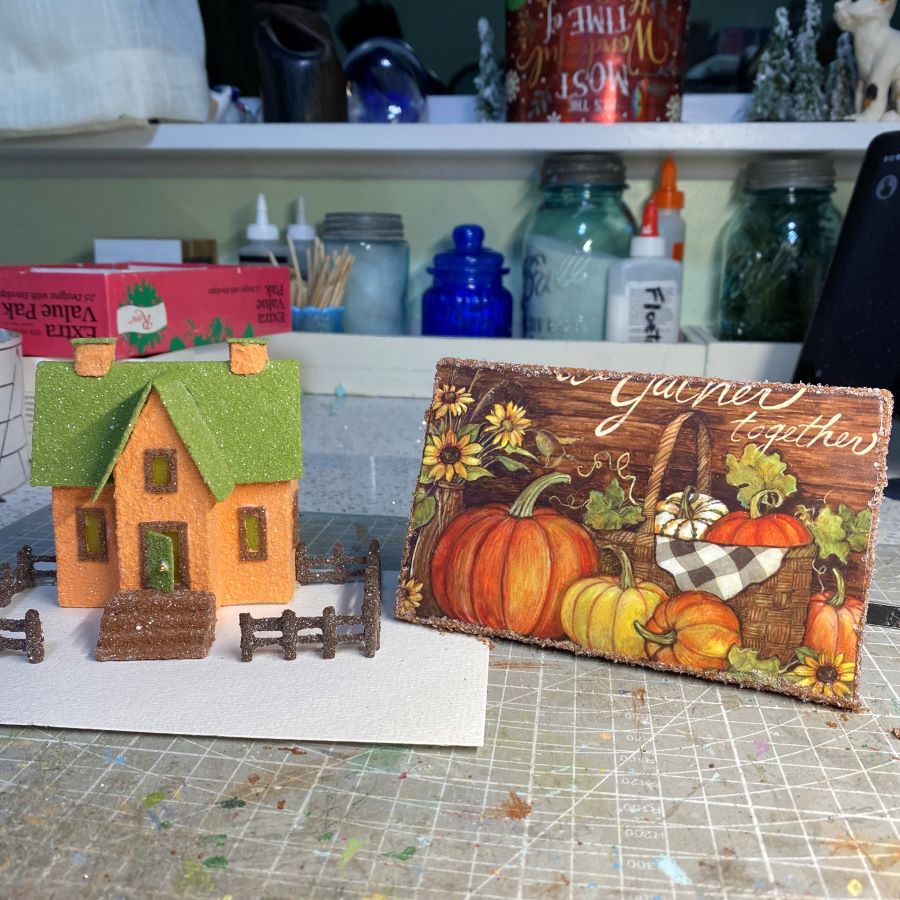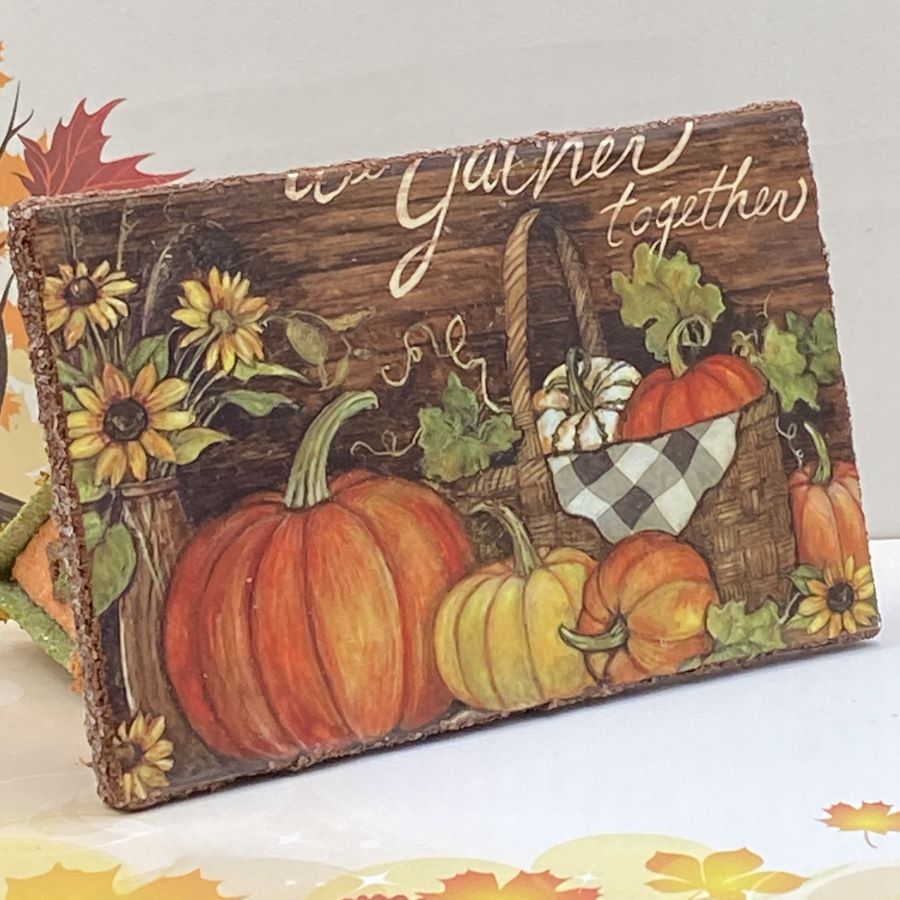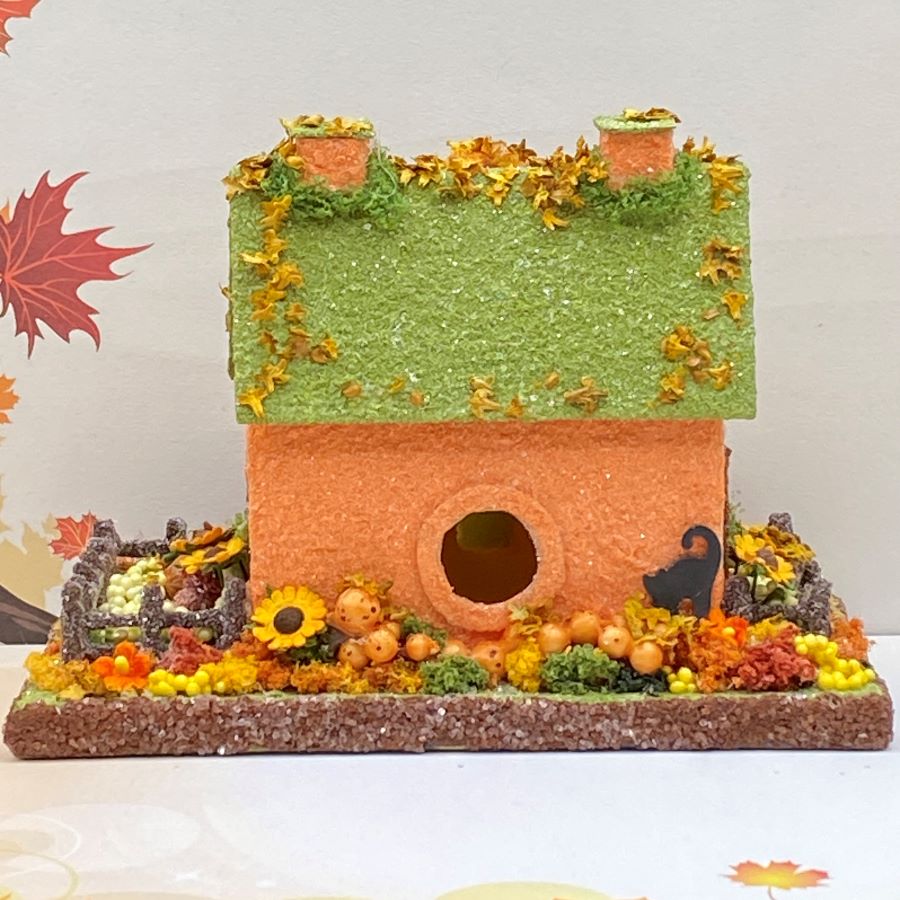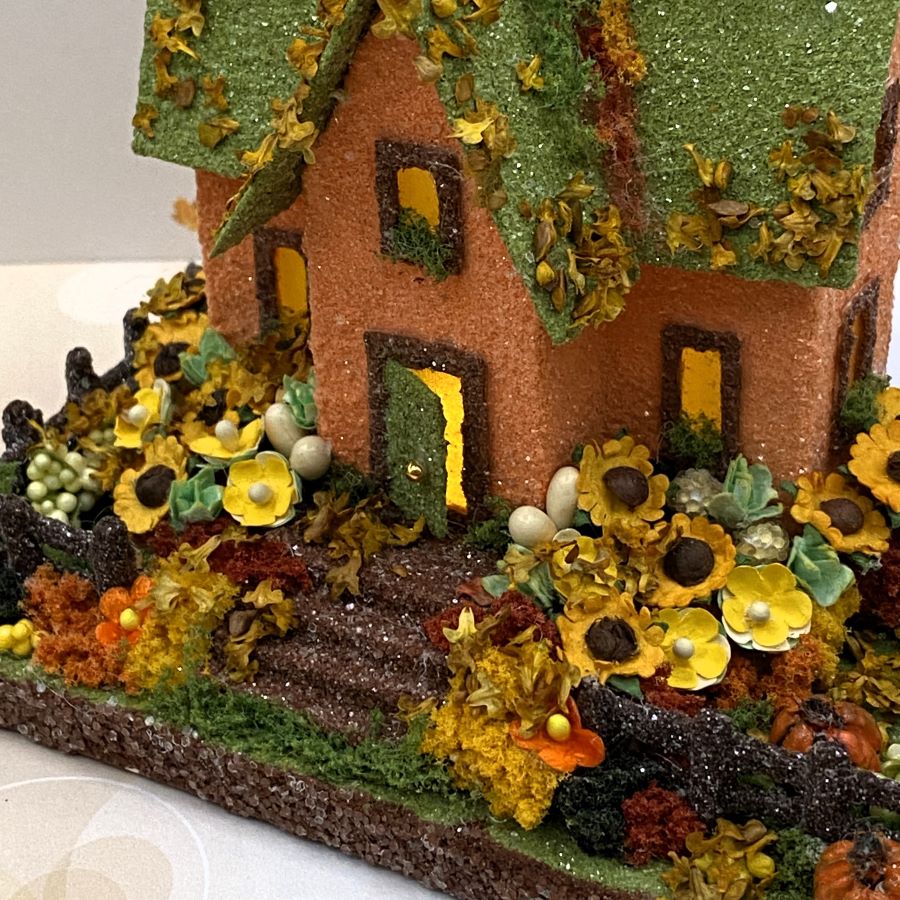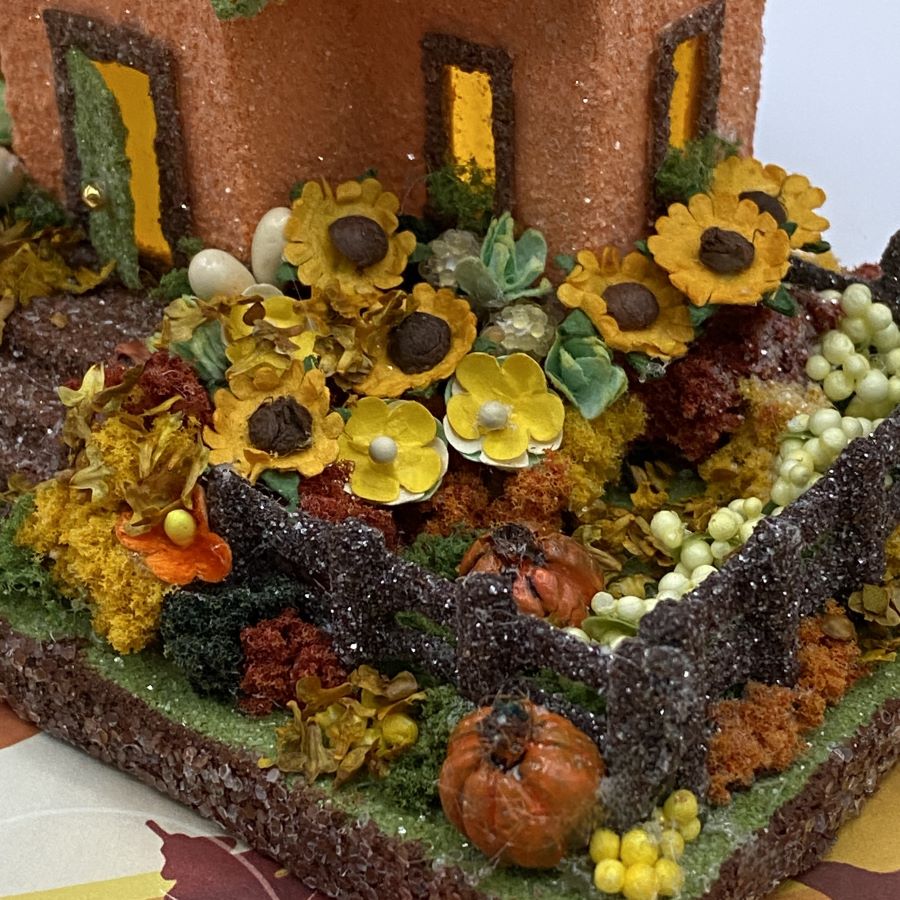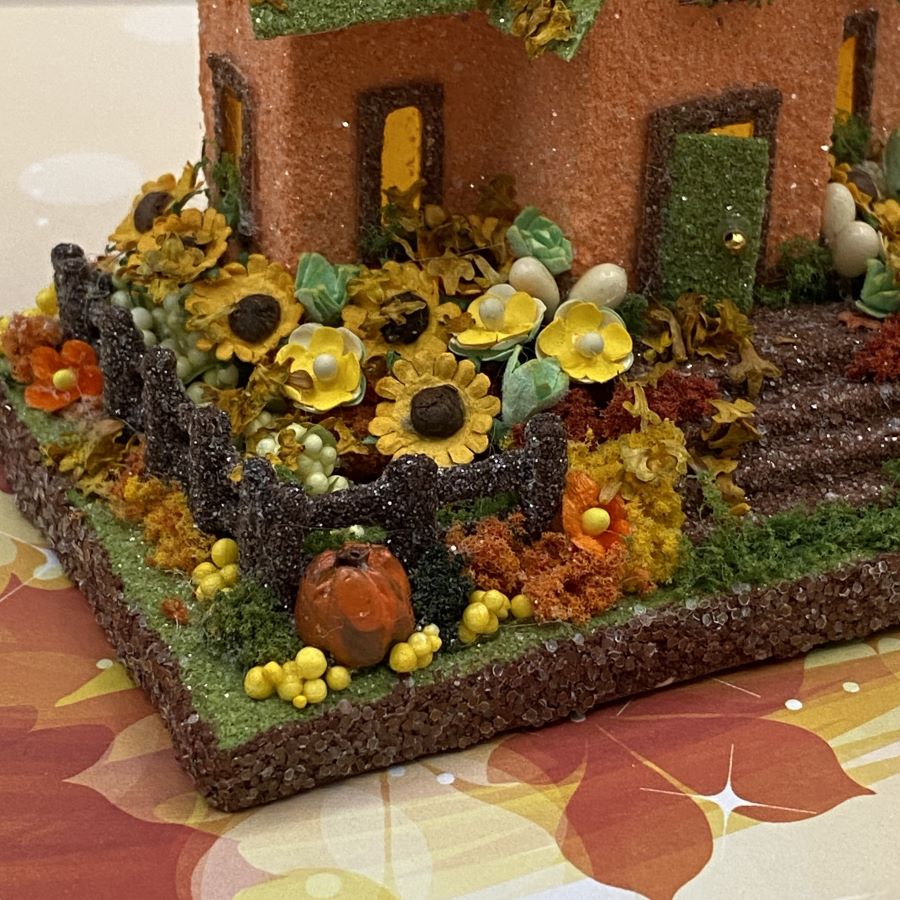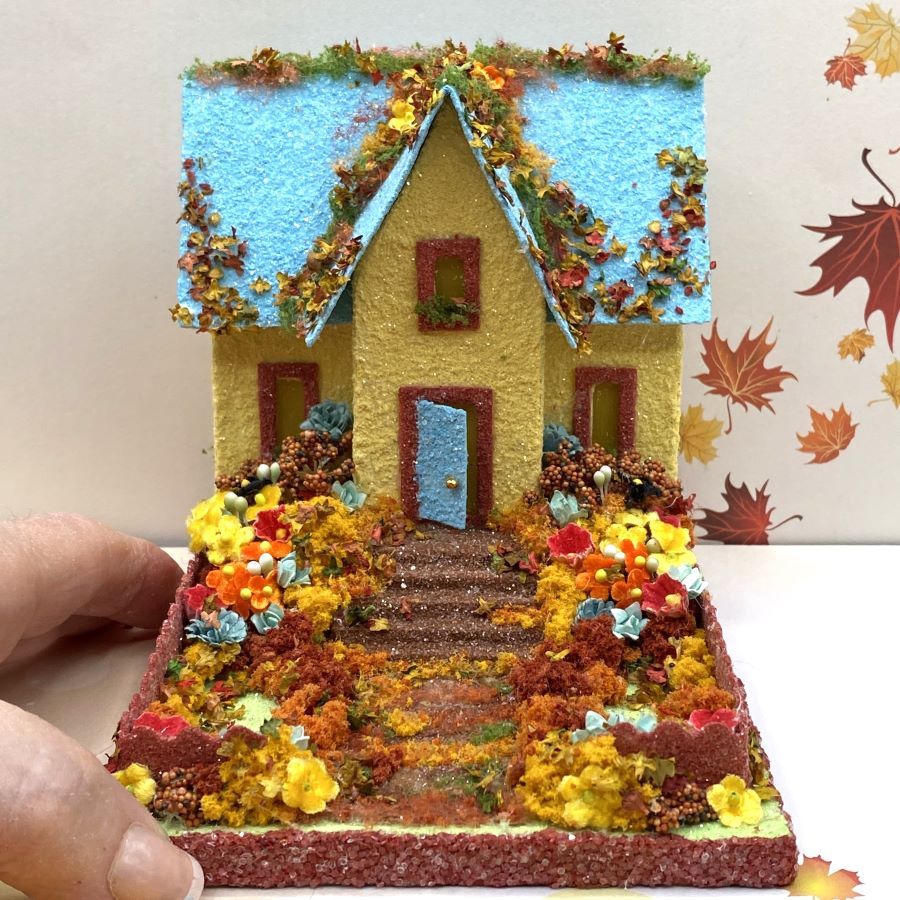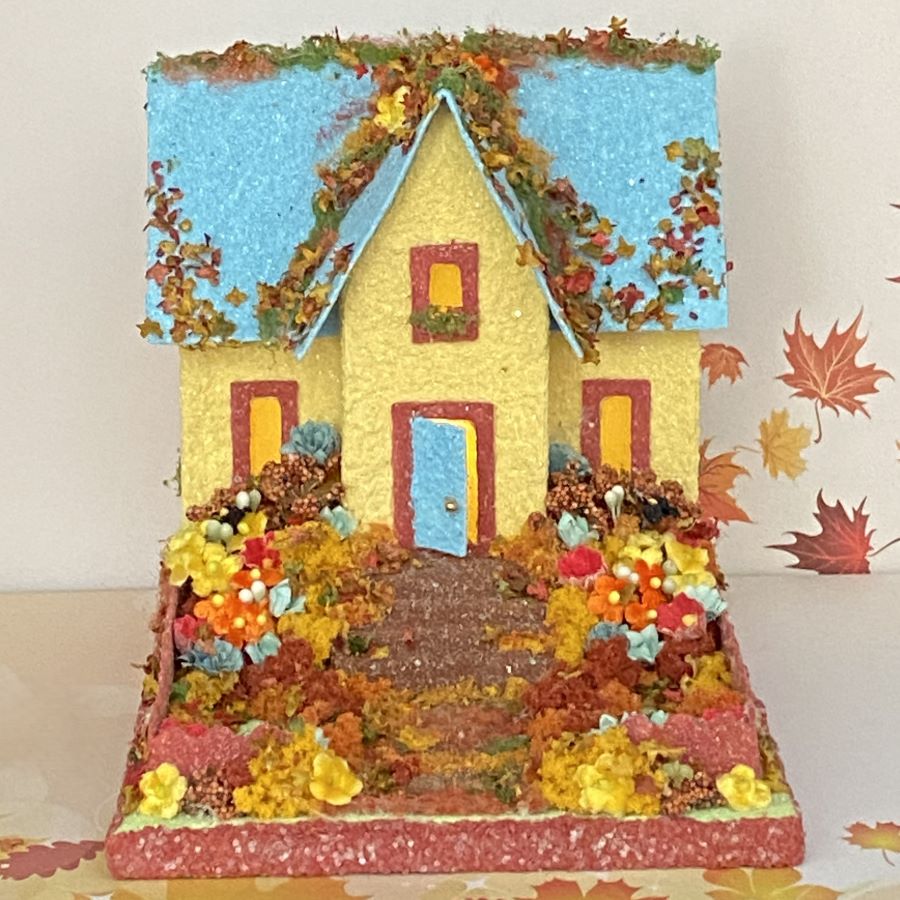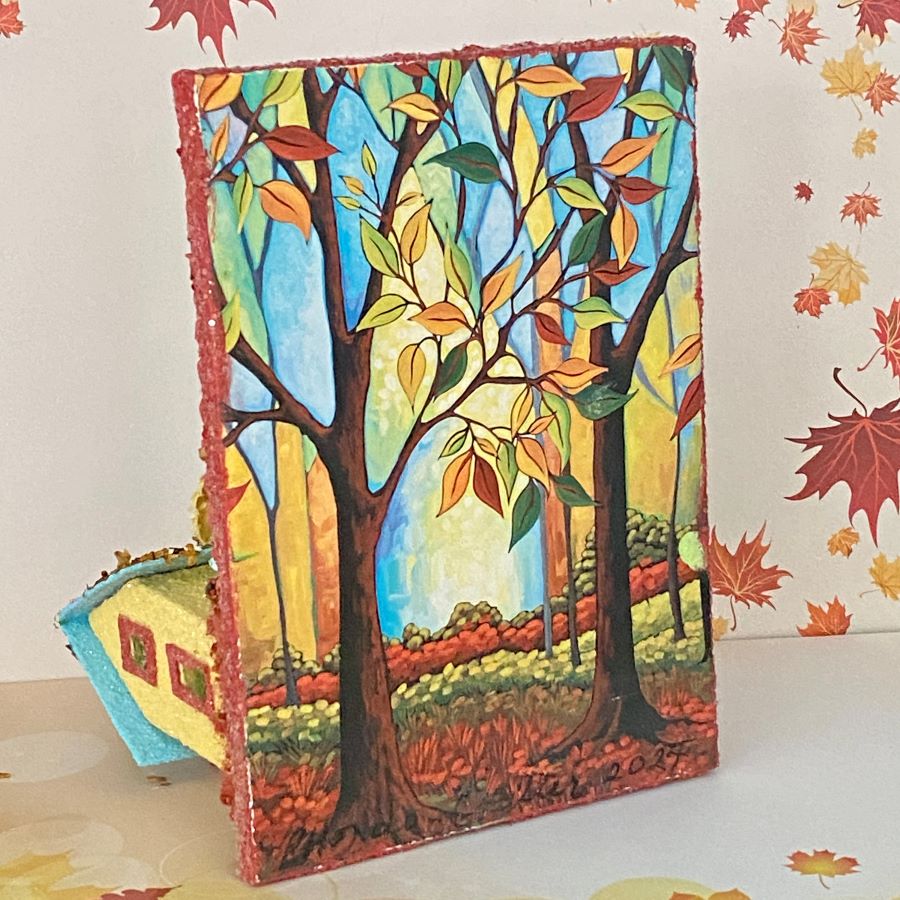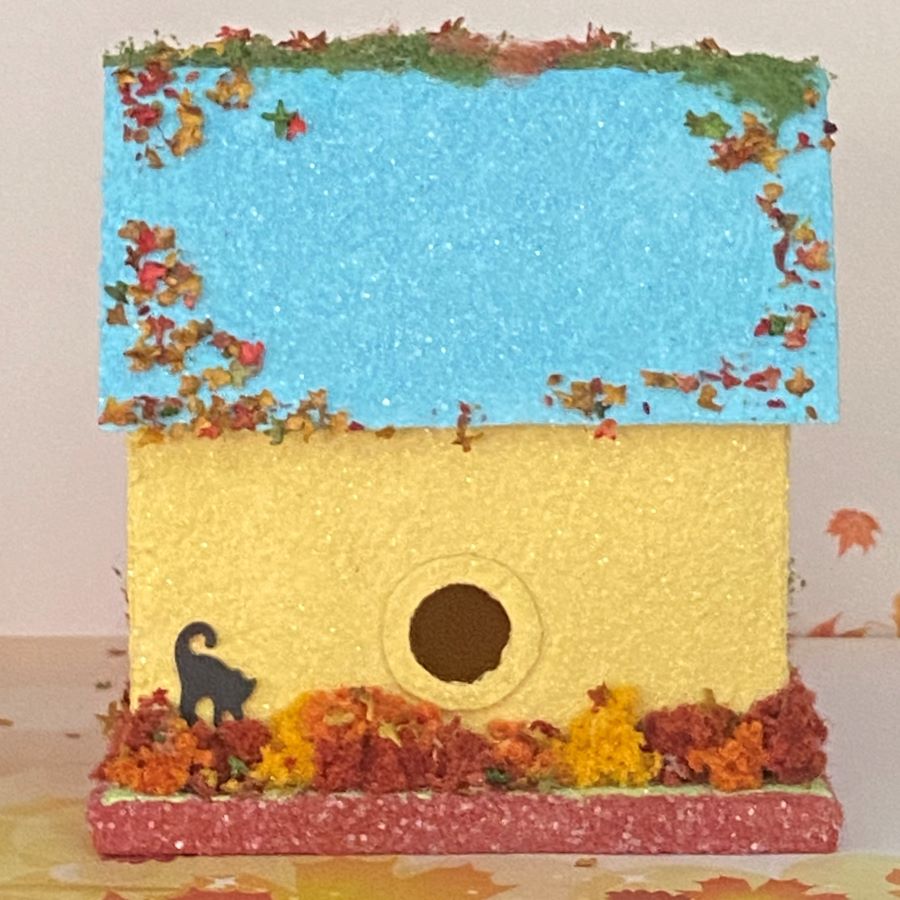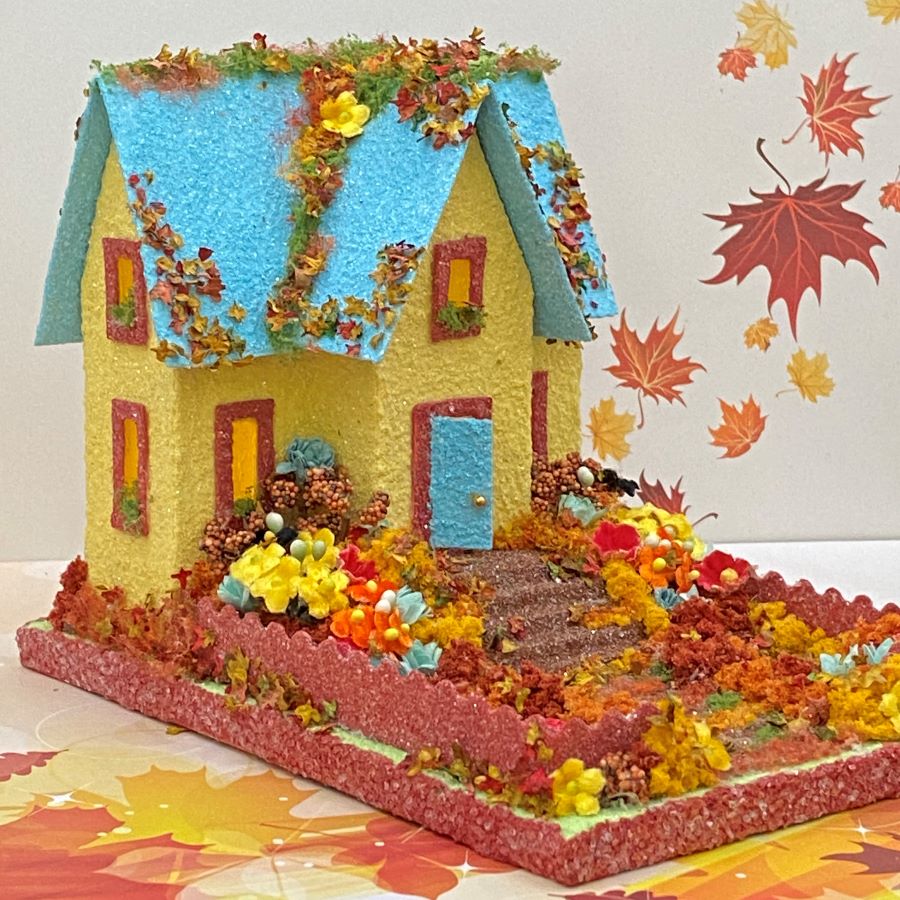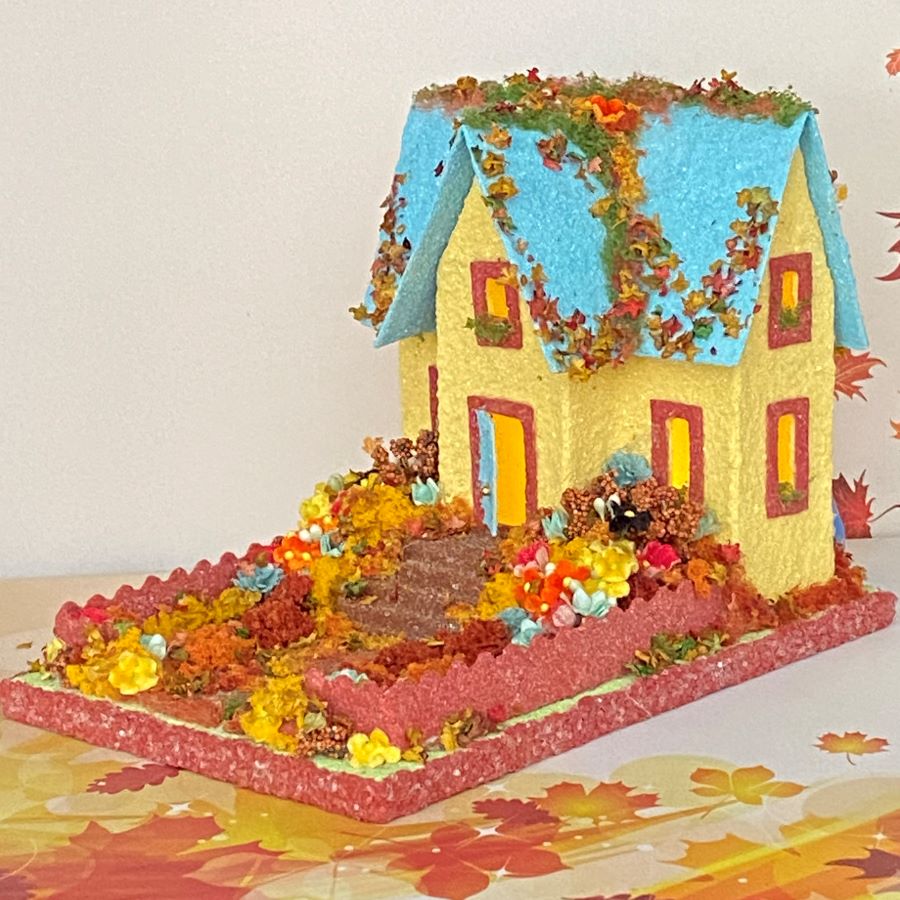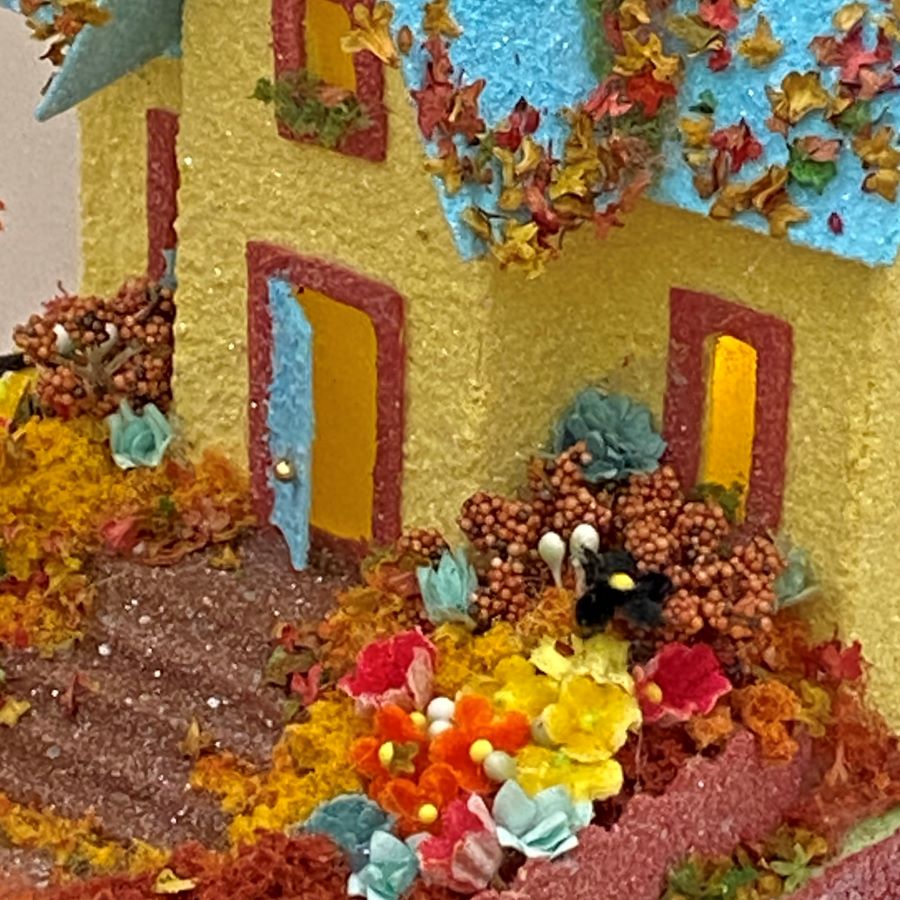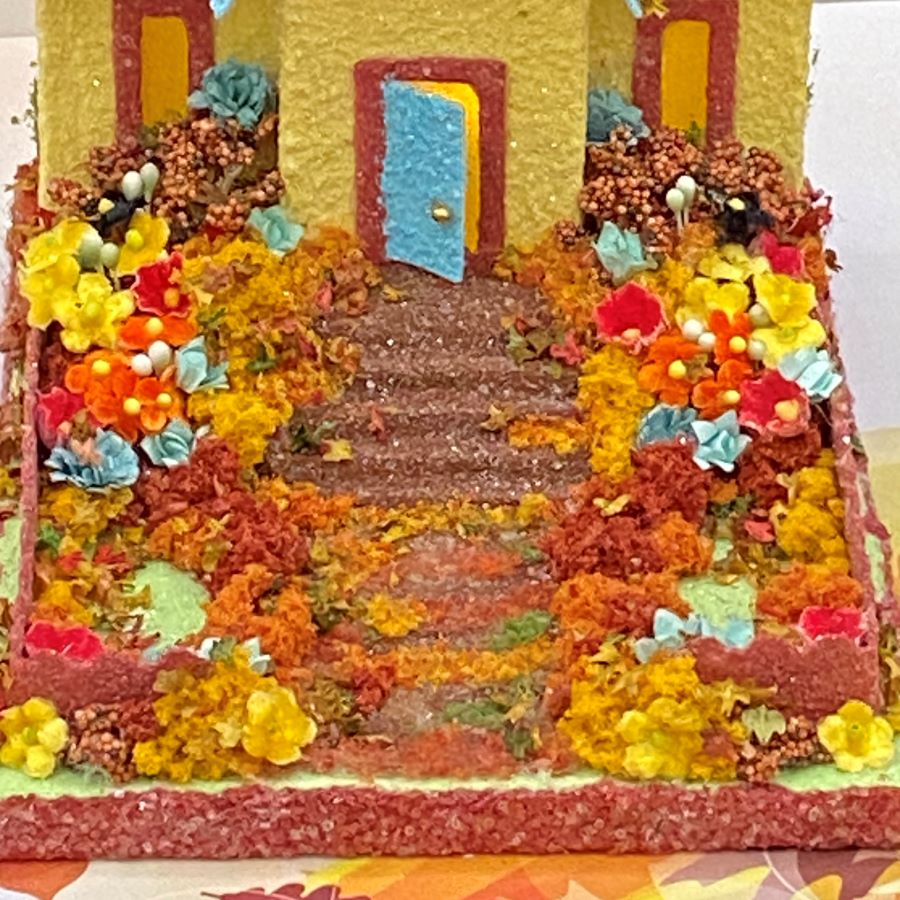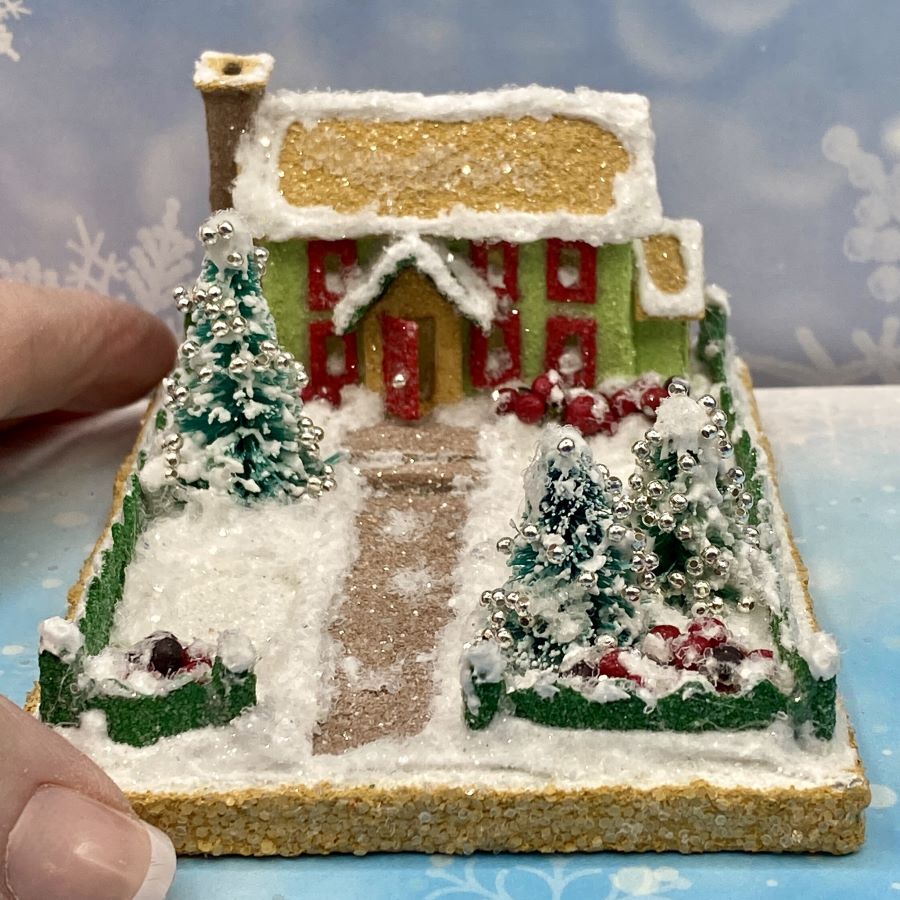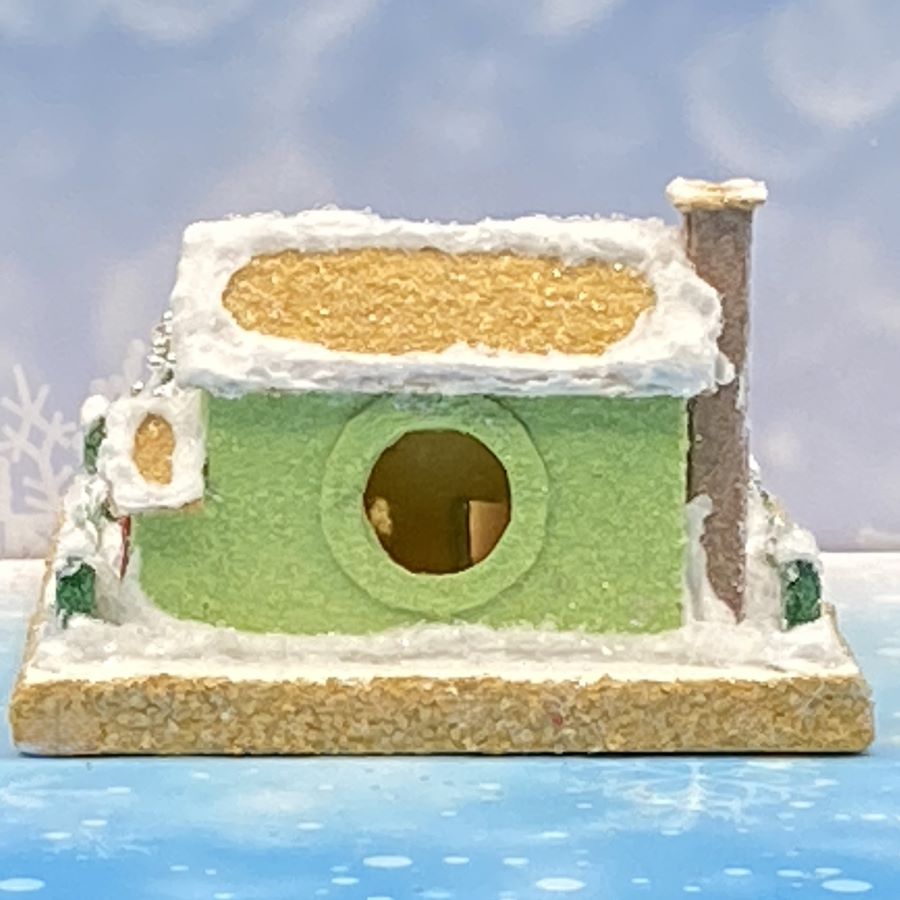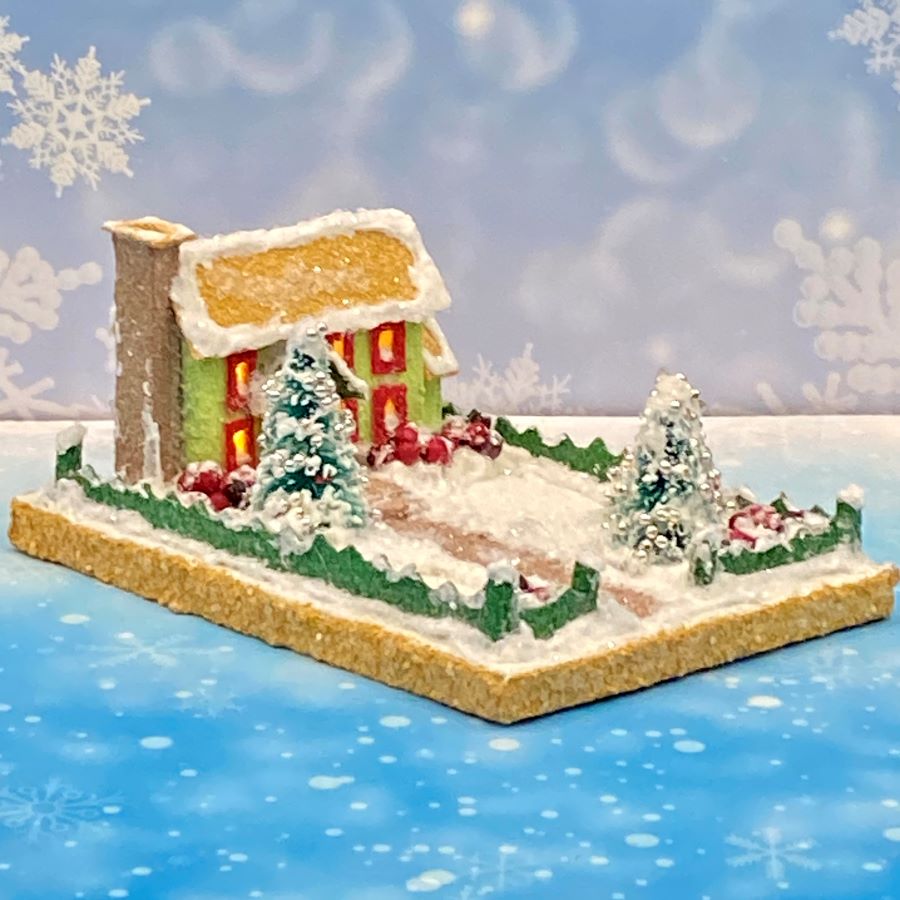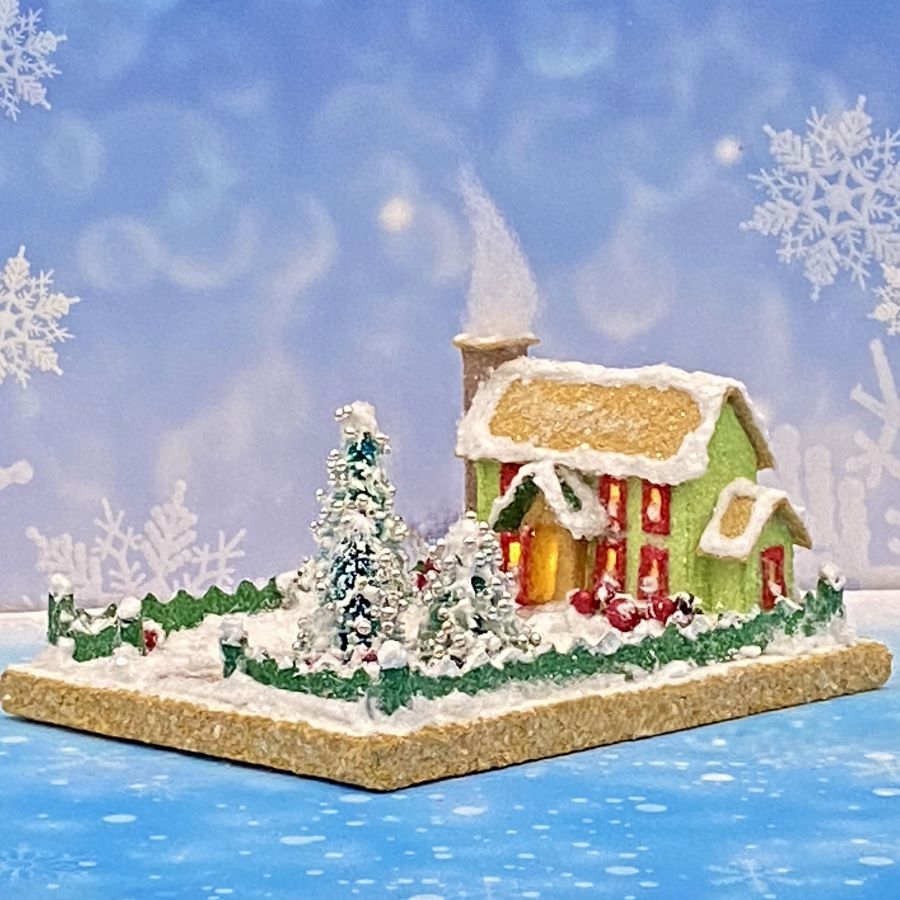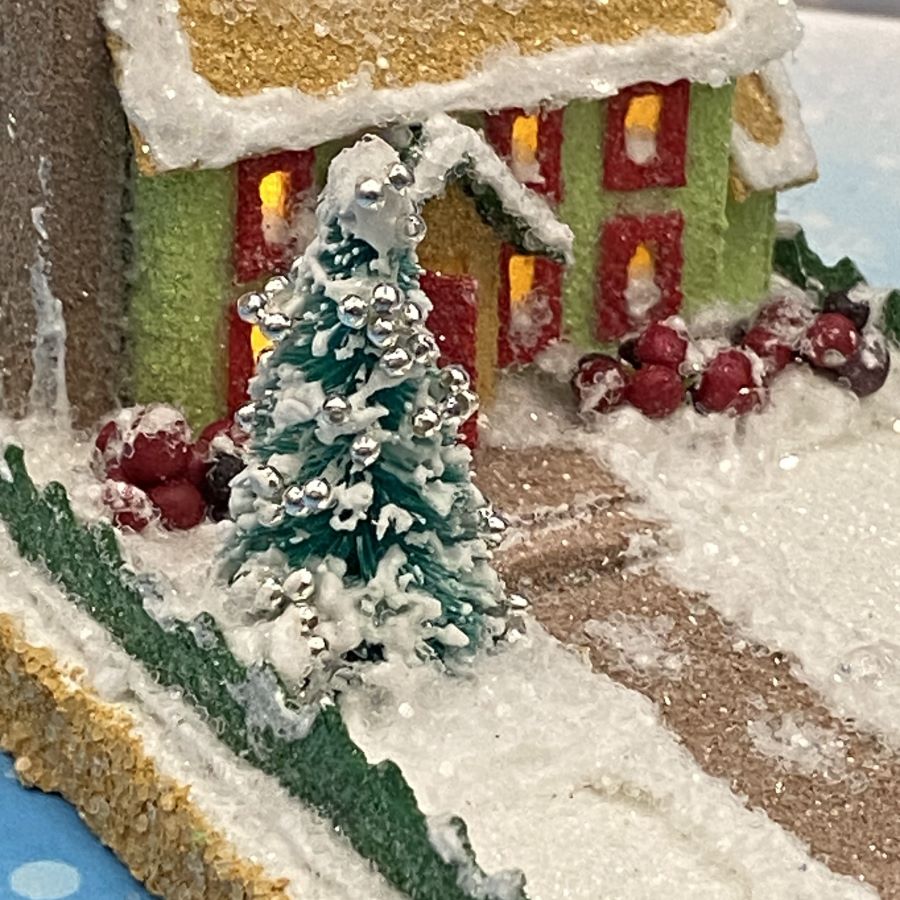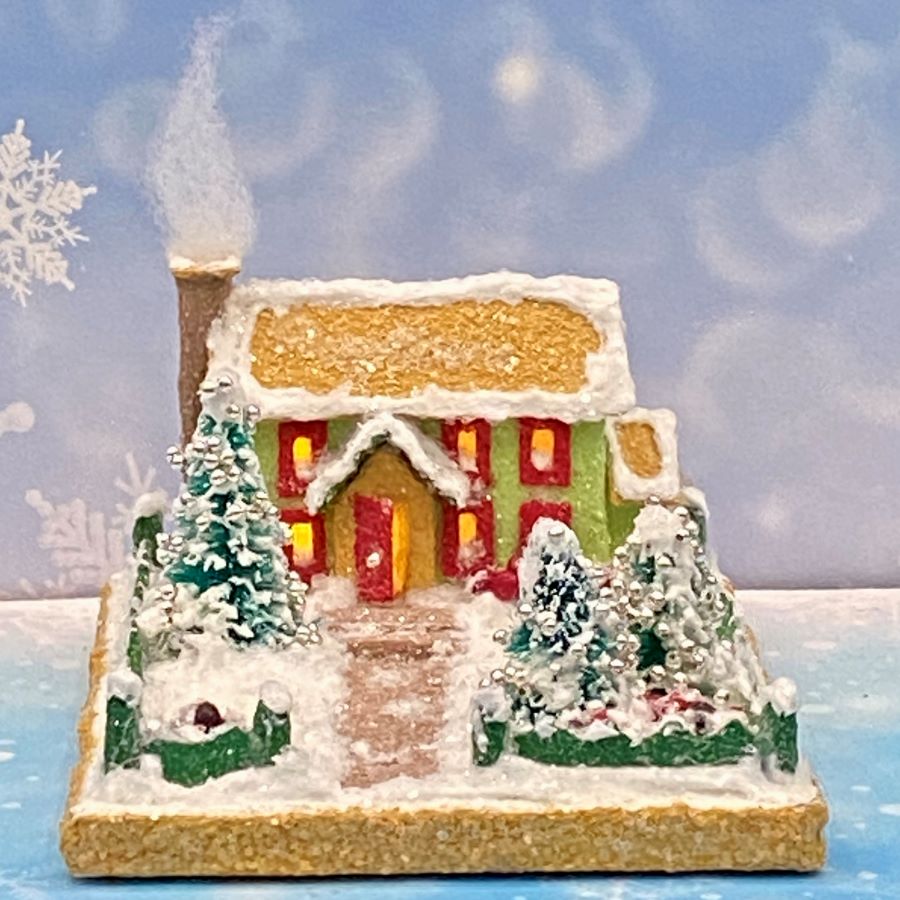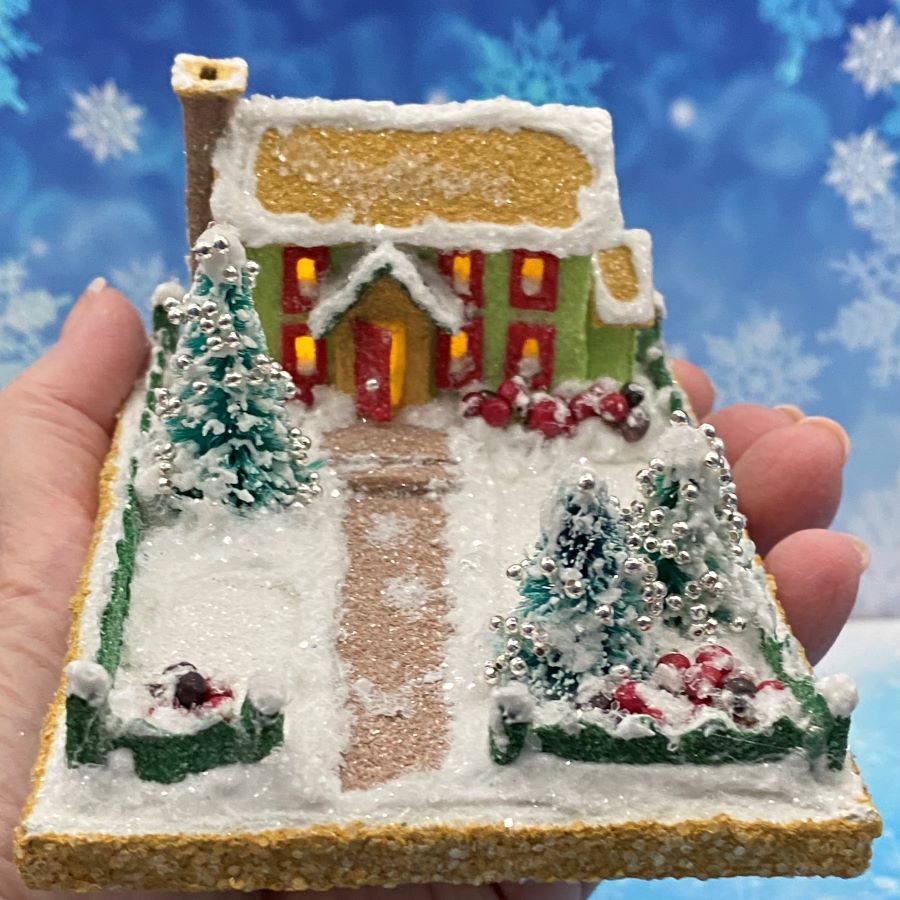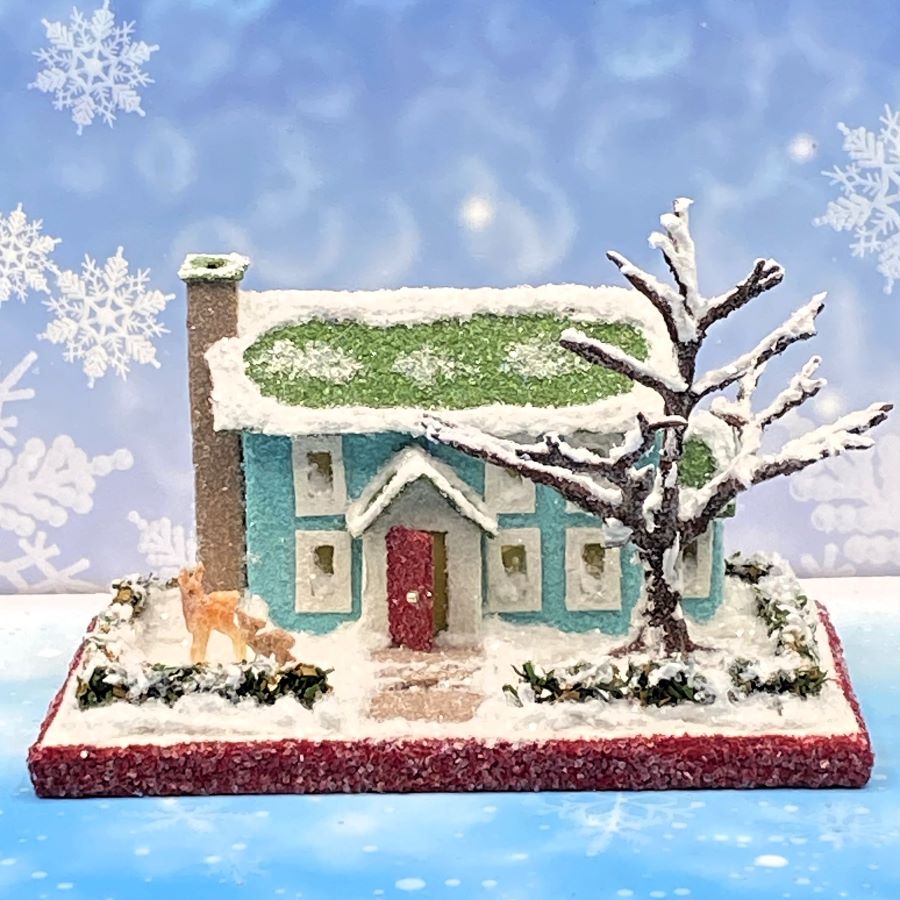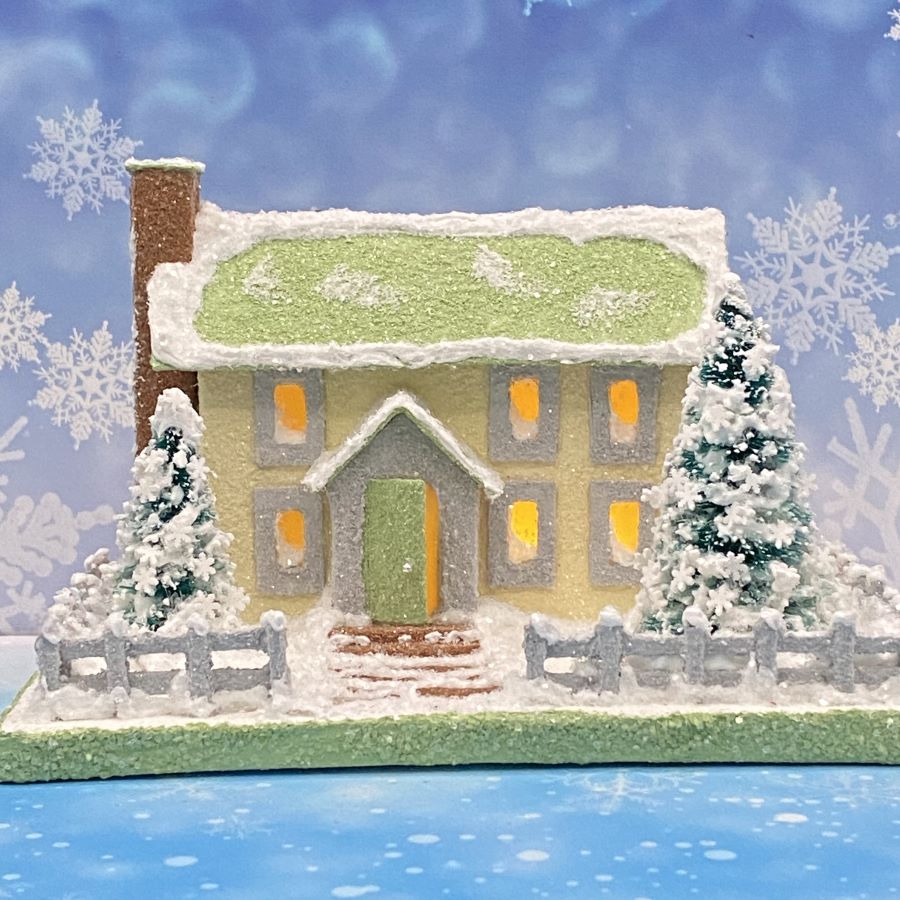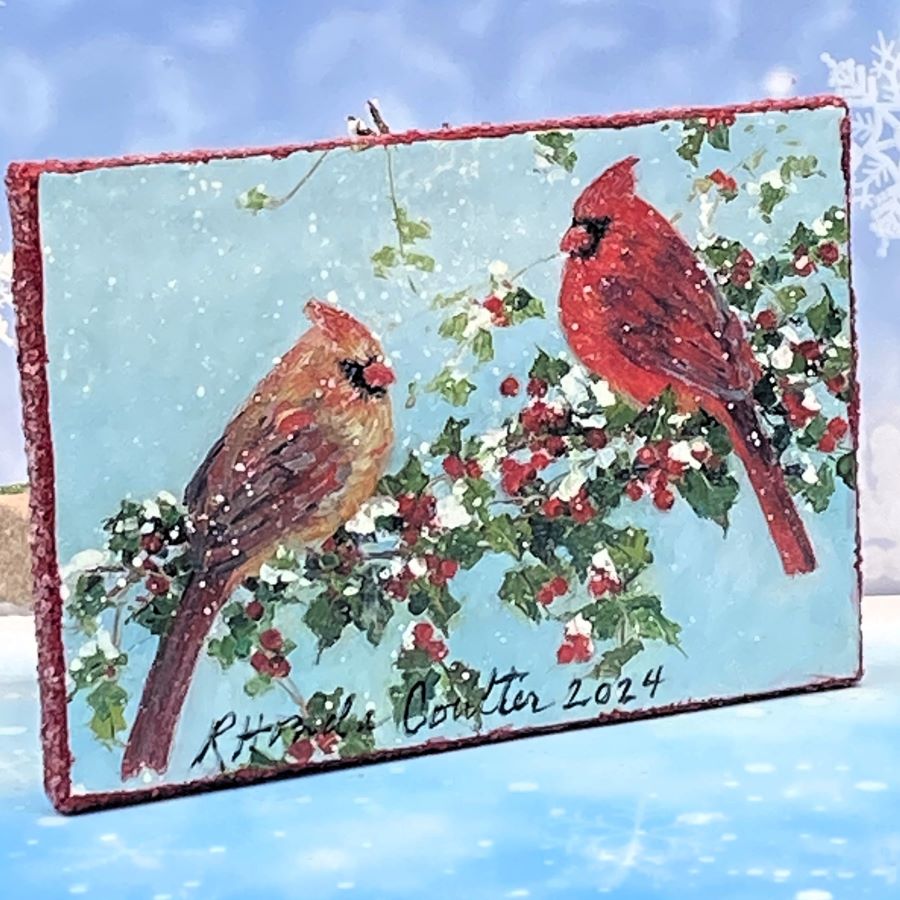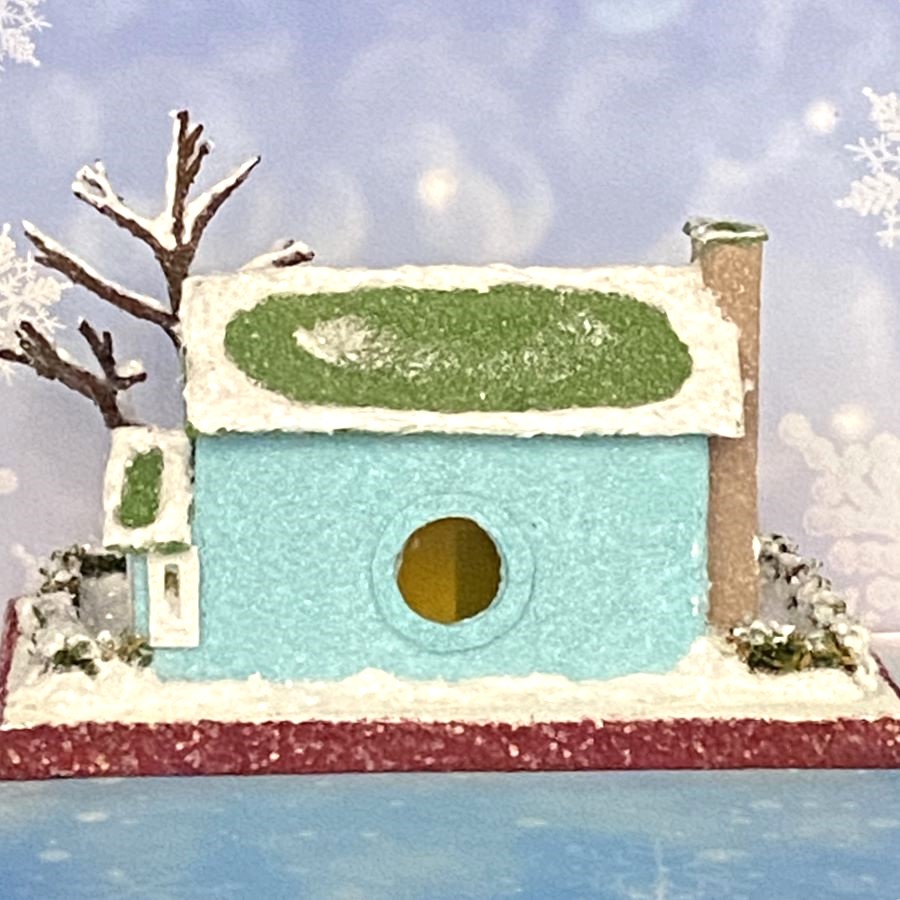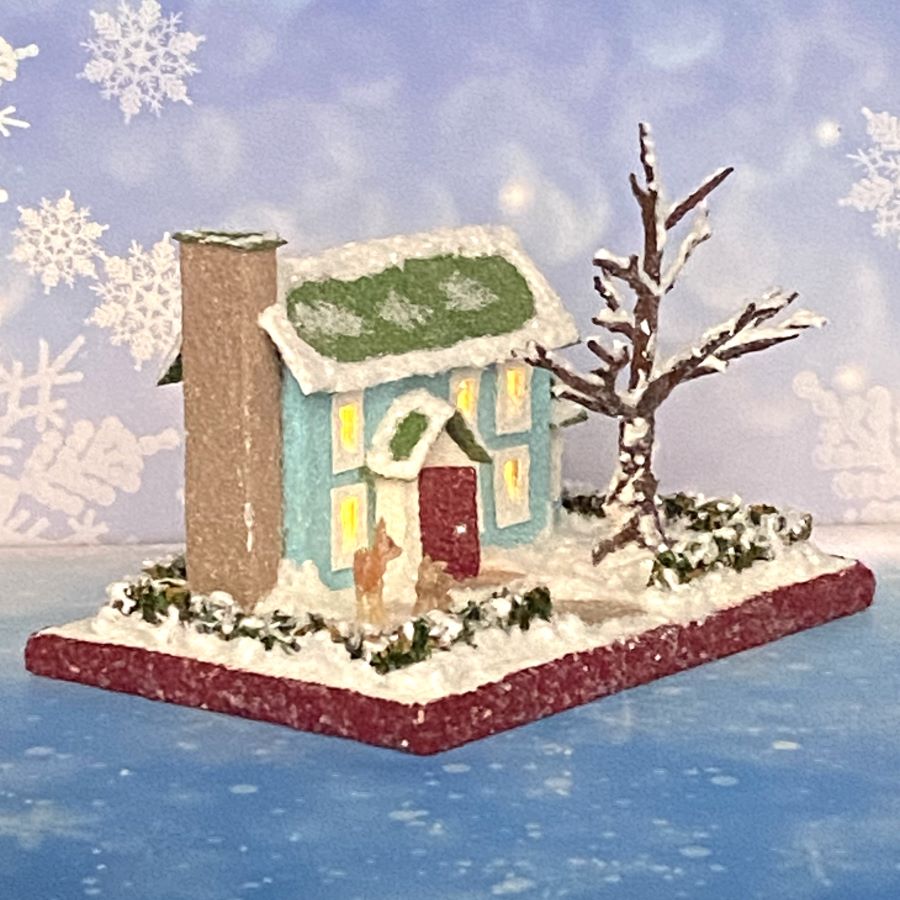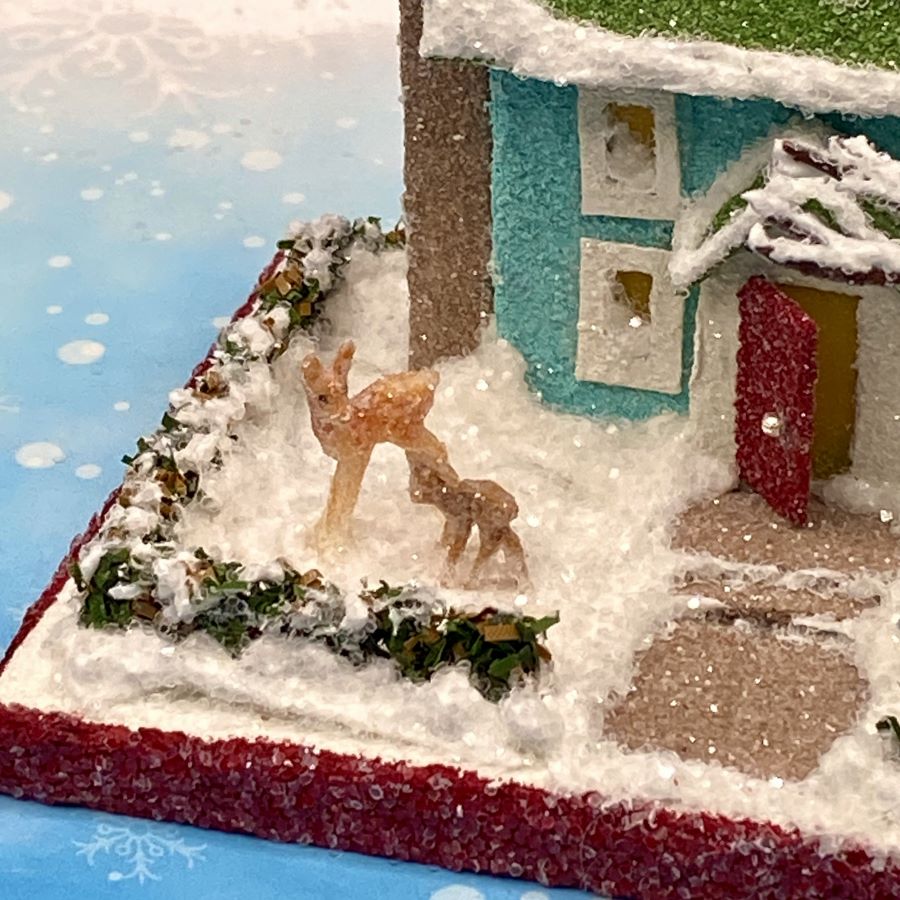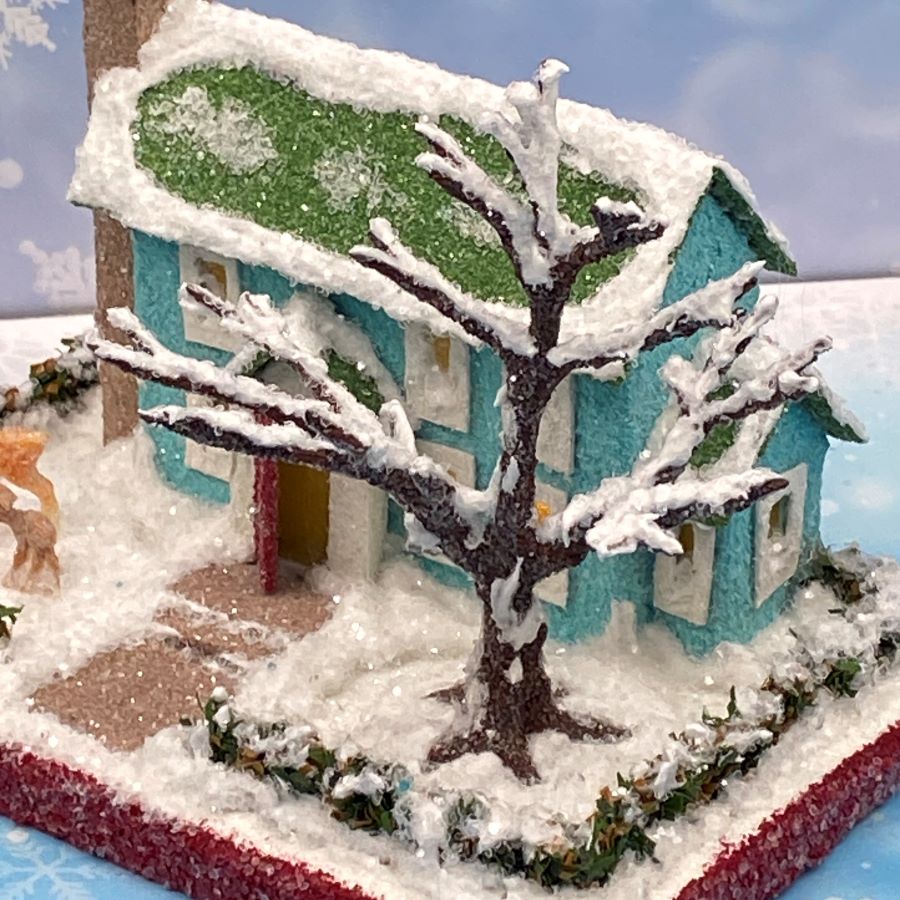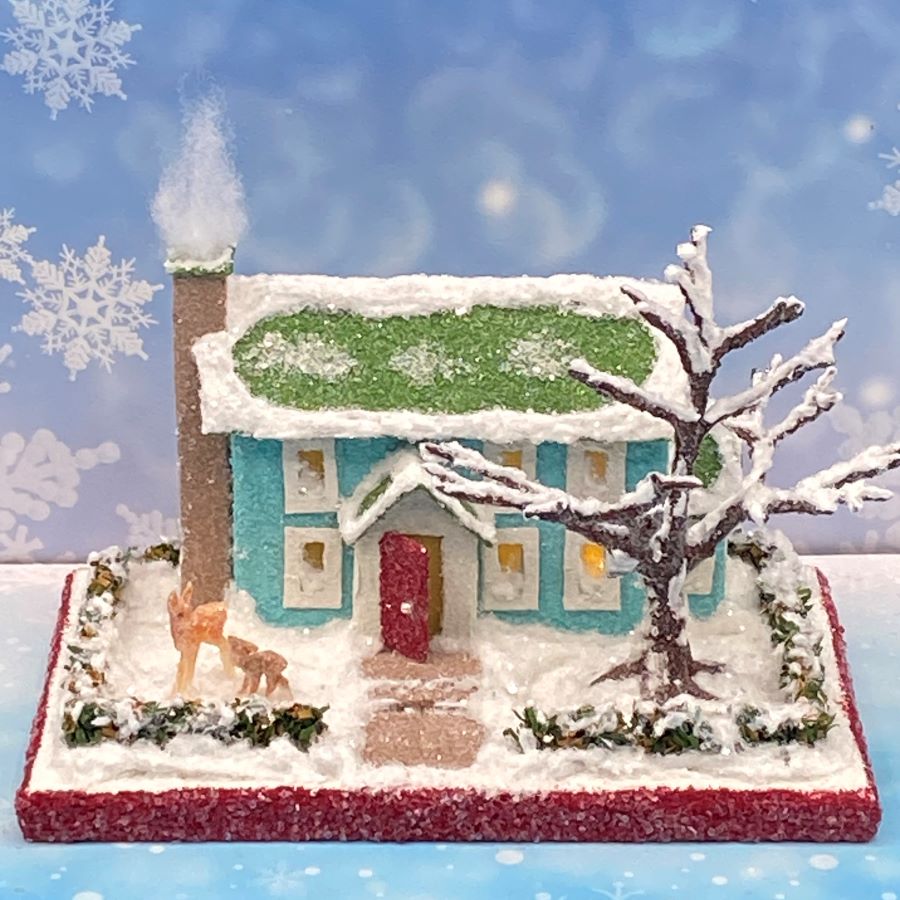I made this winter church for my sister. It is a replica of the church she and her husband have attended for years. This year, 2024, the church had to be torn down, due to structural issues. My sister has a collection of my putz churches. This will be a nice addition to her collection.
The church is made of poster board, chipboard, an upcycled Christmas card for the base, and glitter, glue and paint. The base is 5 1/4″ wide by 8 1/4″ deep. The church is 10″ tall as measured from the bottom of the base to the top of the steeple.


The base is made from an upcycled Christmas card. All my putz are made with a greeting card base. Check out my tutorial for these bases here: Making bases from greeting cards
A hole in the back allows the use of a short LED light string for lighting the church.


It looks so lovely when the lights come on. Looks like it is ready for the Christmas Eve service!


The front of the church is flanked by two small bottle brush trees. The belfry containes a gold bell that swings freely.


I used photographs as my inspiration for the model. The finished size of the church didn’t leave room for much landscaping. I kept it simple so the church would get all the attention.


I think this putz is the second hardest one I’ve made. Most of my putz buildings are from patterns I draw that aren’t very deep. The putz might be three or four inches wide and just an inch and a half deep. A replica demands a more accurate rendition of the building. That increased size makes a structure that needs some inner framework for support. I used foam core to cut three arches that support the interior of the building. I wish I had taken a picture of that.
Most roofs for my putz creations are made of the same poster board that the walls are made of. I found that in a larger building such as this church, a heavier stock was needed. I used chipboard for the roof. That eliminated warping.
The church was made of brick. I used my regular paint mixture, textured with sand, to paint the church. I didn’t try to make a brick facade or a brick “look” for the outer walls. The walls have small buttresses. I made those from 1/4″ balsa wood, cutting them to the right shape and size. I needed eight of those. The balsa made it an easy project. I glued those to the outer walls before I painted the church.
To give steeples needed support I always fill them with hot glue. It fills the cavity and makes them quite strong. They will not crush after years of use. This steeple was larger than most I make, but it was worth the use of the glue to know the structure is very strong and will last a long time.
This tutorial shows how I set bells in church belfrys. setting bells in putz church bell towers
If you have any questions about my posted putz houses, or about creating your own putz houses, please ask. I am happy to share what I have learned about the art of putzing.
To see more of my putz houses, as well as Christmas ornaments I have made from upcycled holiday cards, please visit my Etsy shop.
Want to try making your own putz houses? Check out my putz tutorials for more information. My blog can be searched, as well. Some of the turorials haven’t been listed on the tutorial page. Working on that!
Tutorials / Putz and Glitter Houses
All proceeds from my Etsy shop benefit Kenya Mercy Ministries. KMM works with the urban poor of Nairobi, Kenya, particularly the children and their families who live in Kibera, the largest urban slum in Africa. Thank you for your part in helping these children when you purchase items from my shop!
~~Rhonda 🙂
